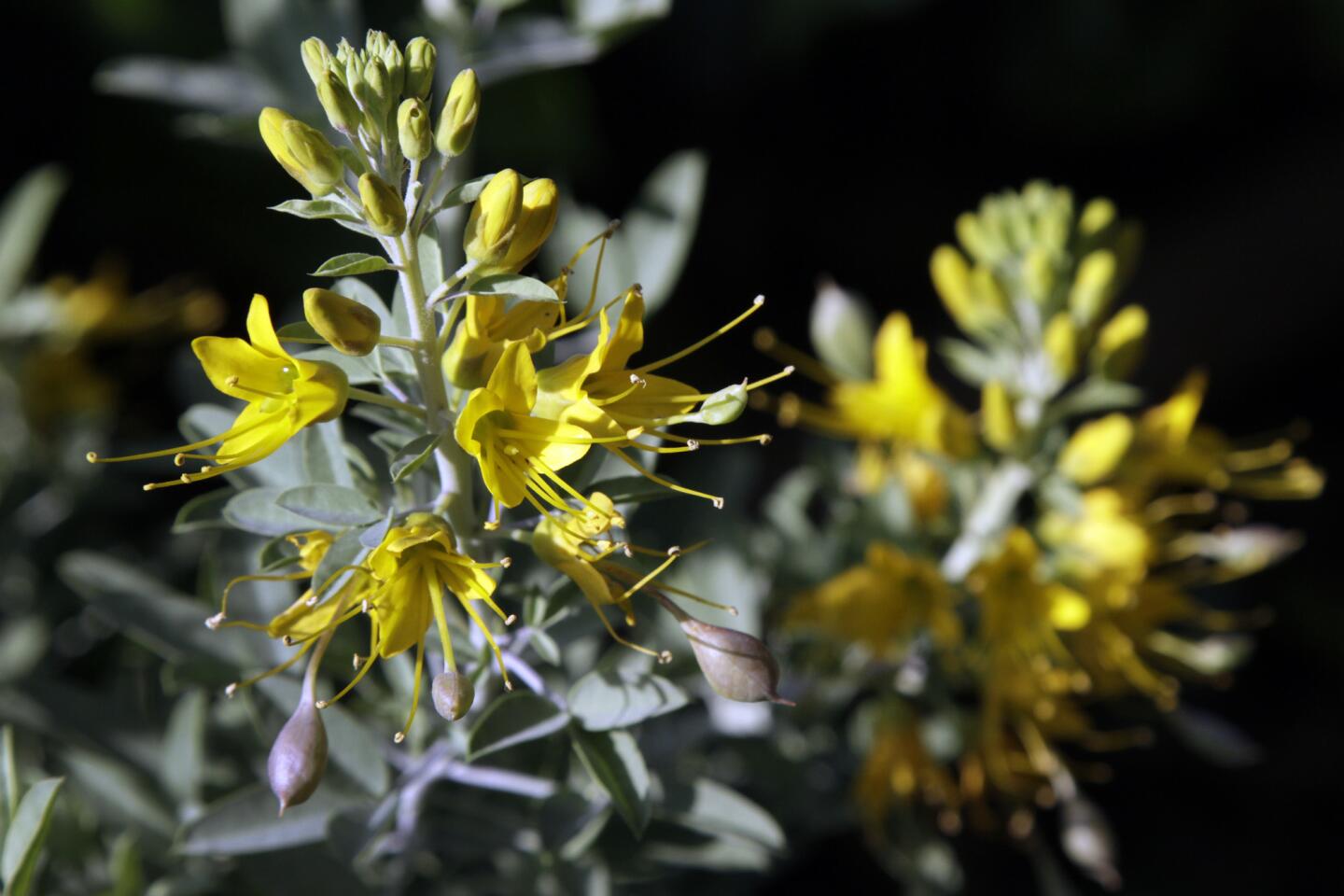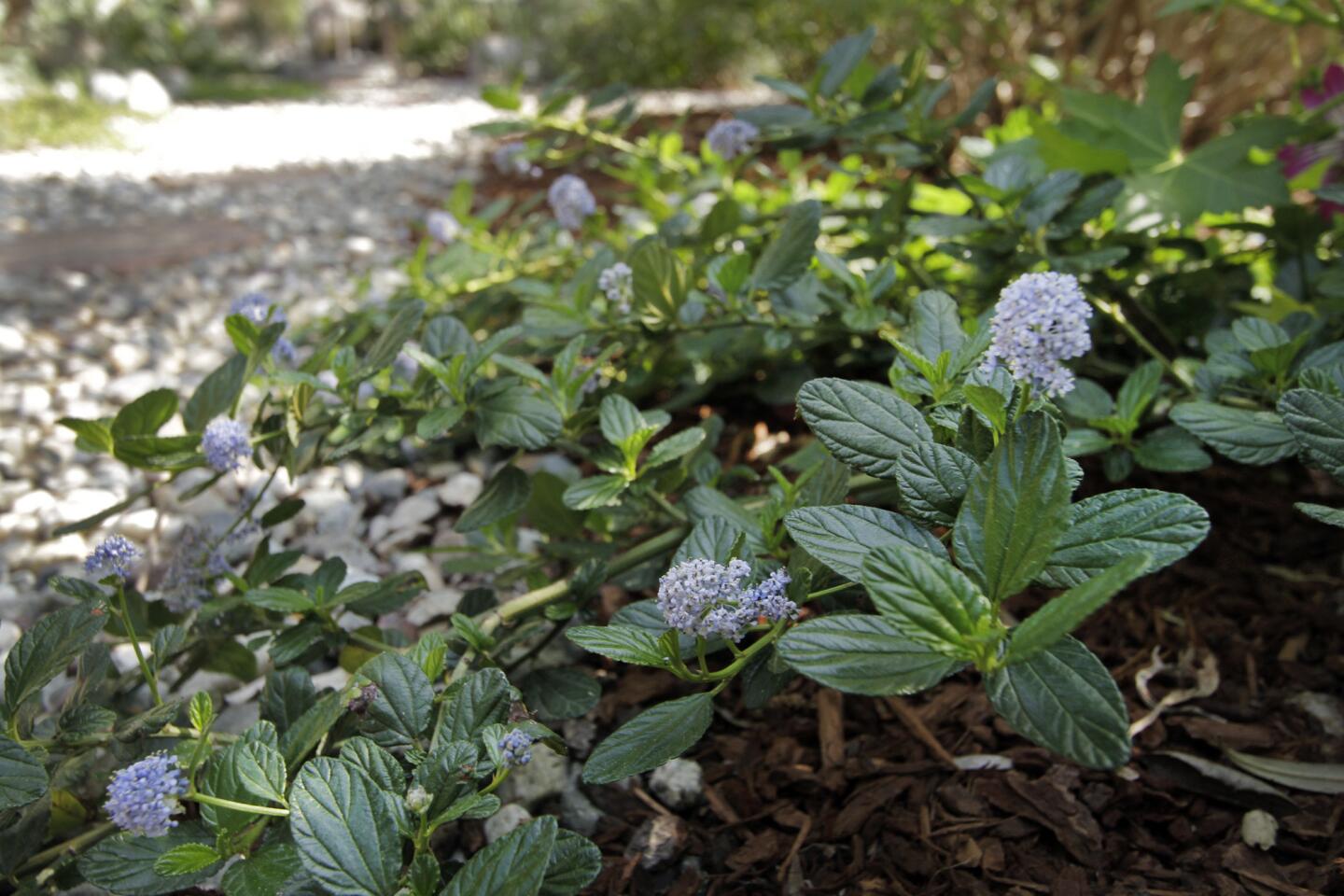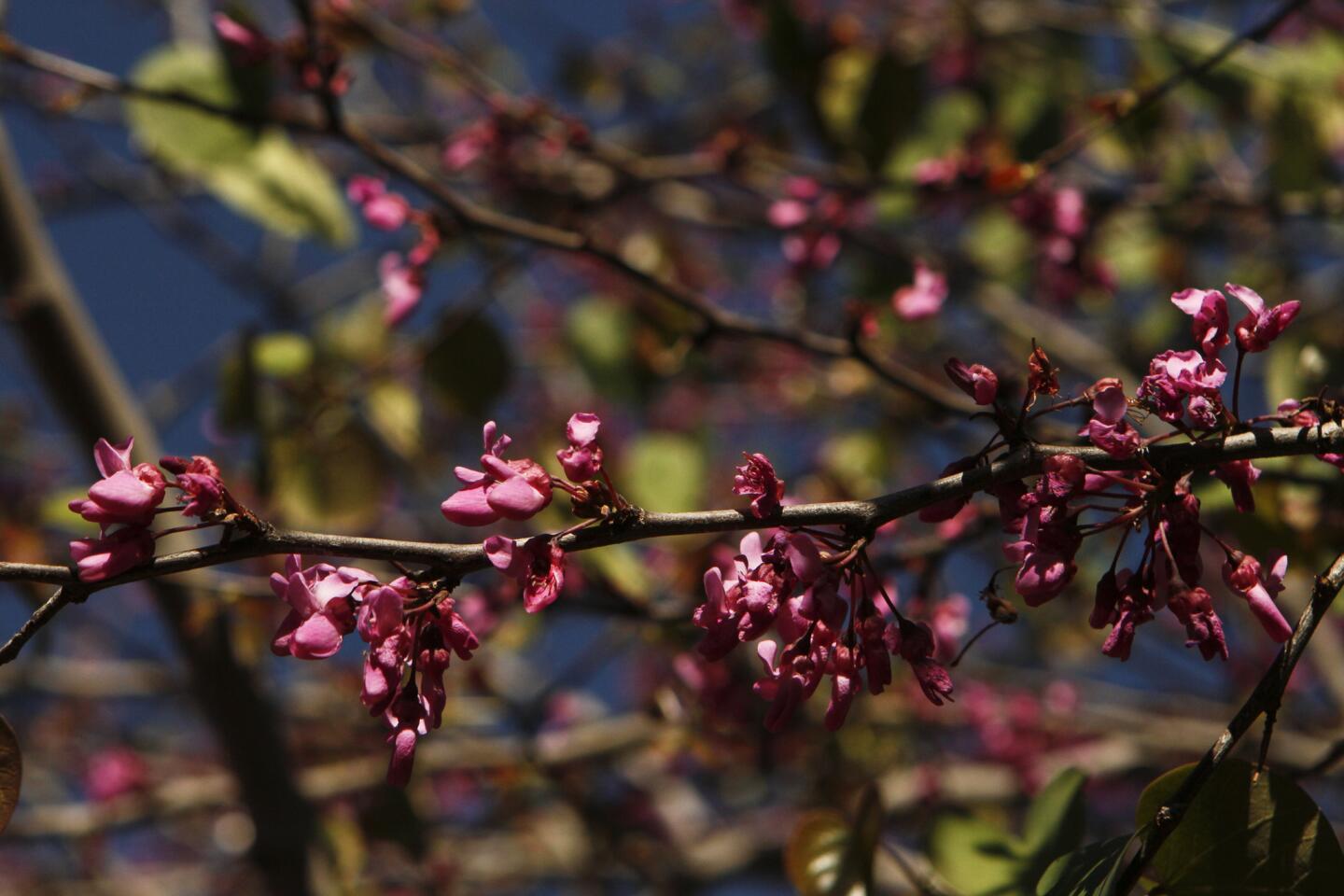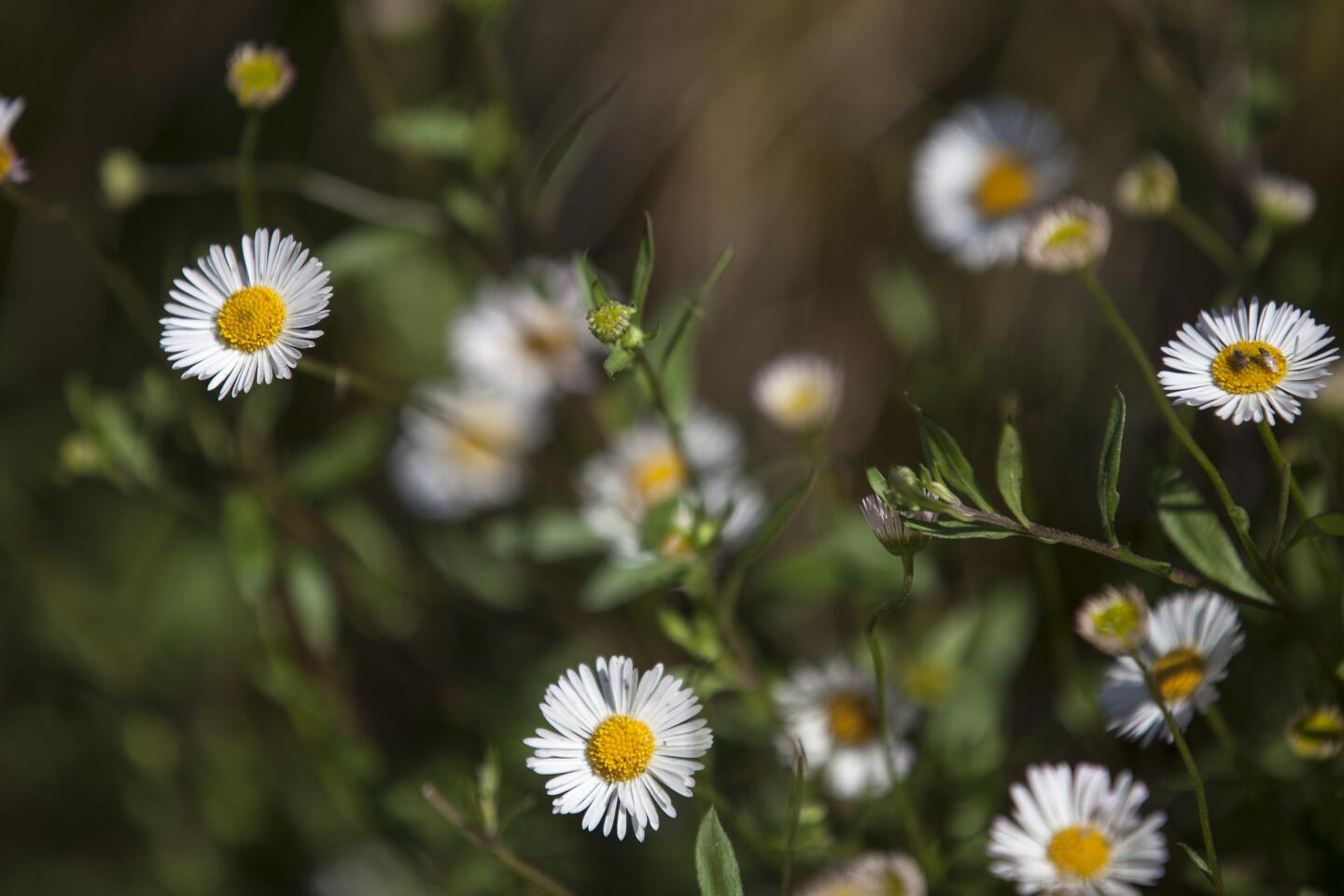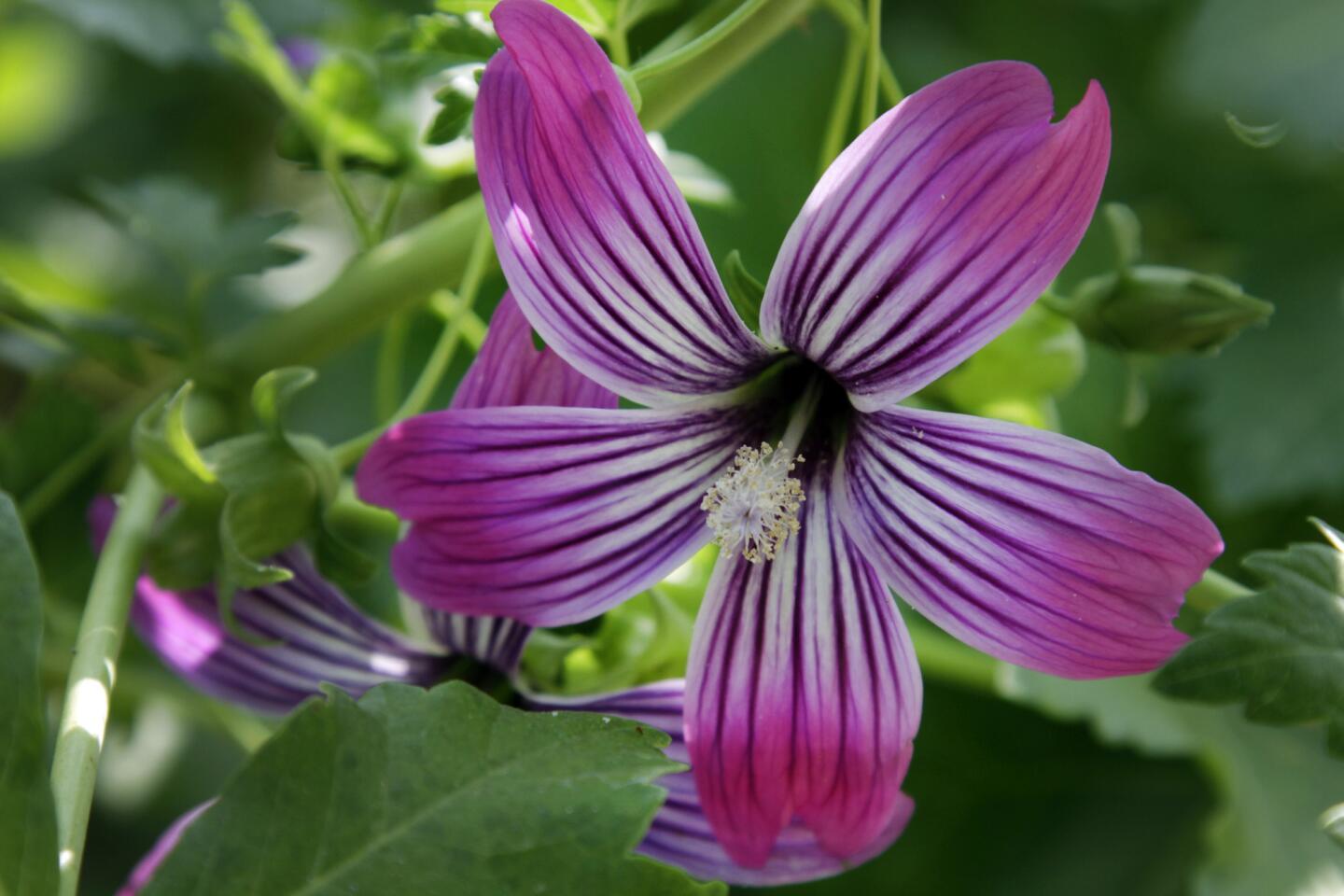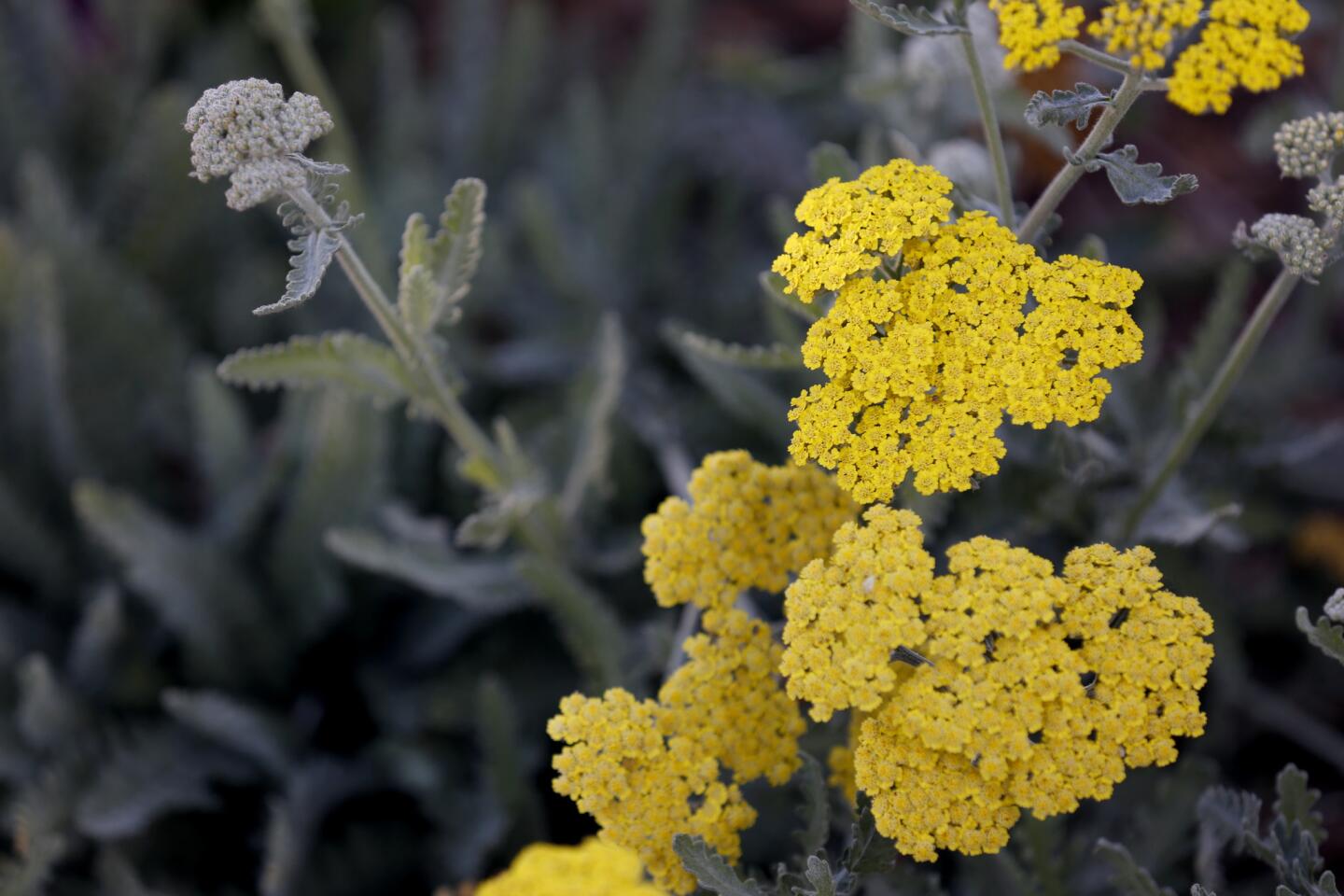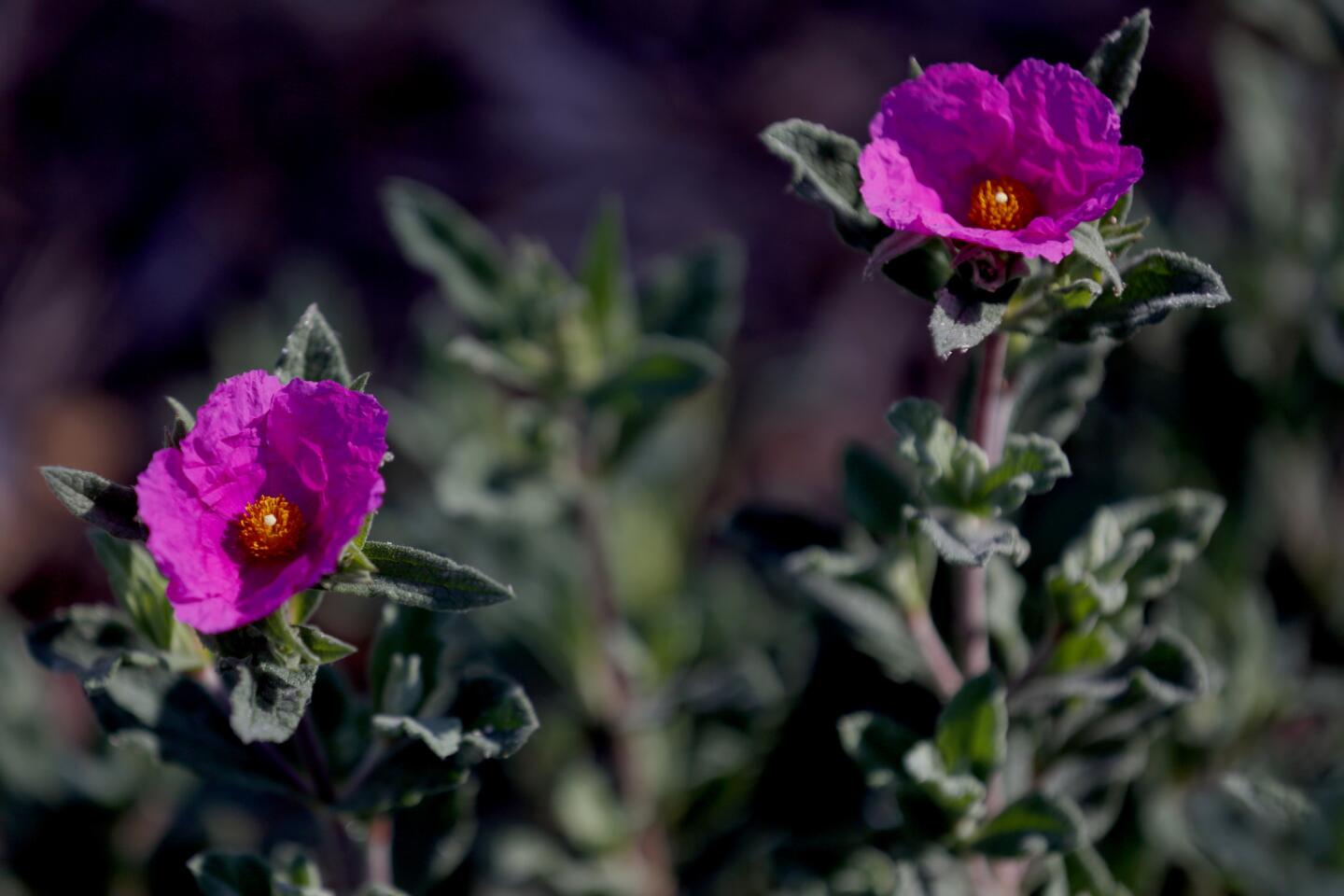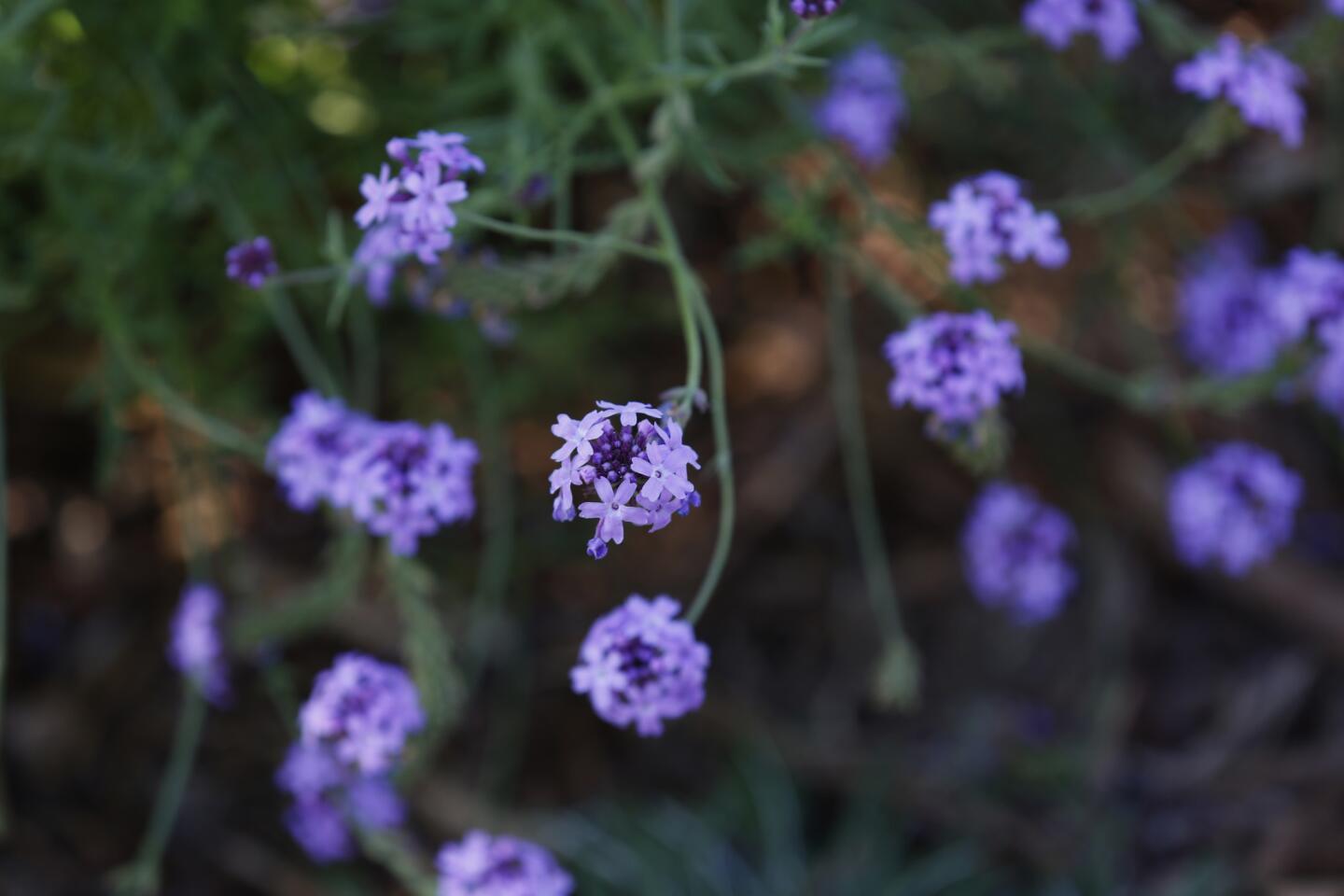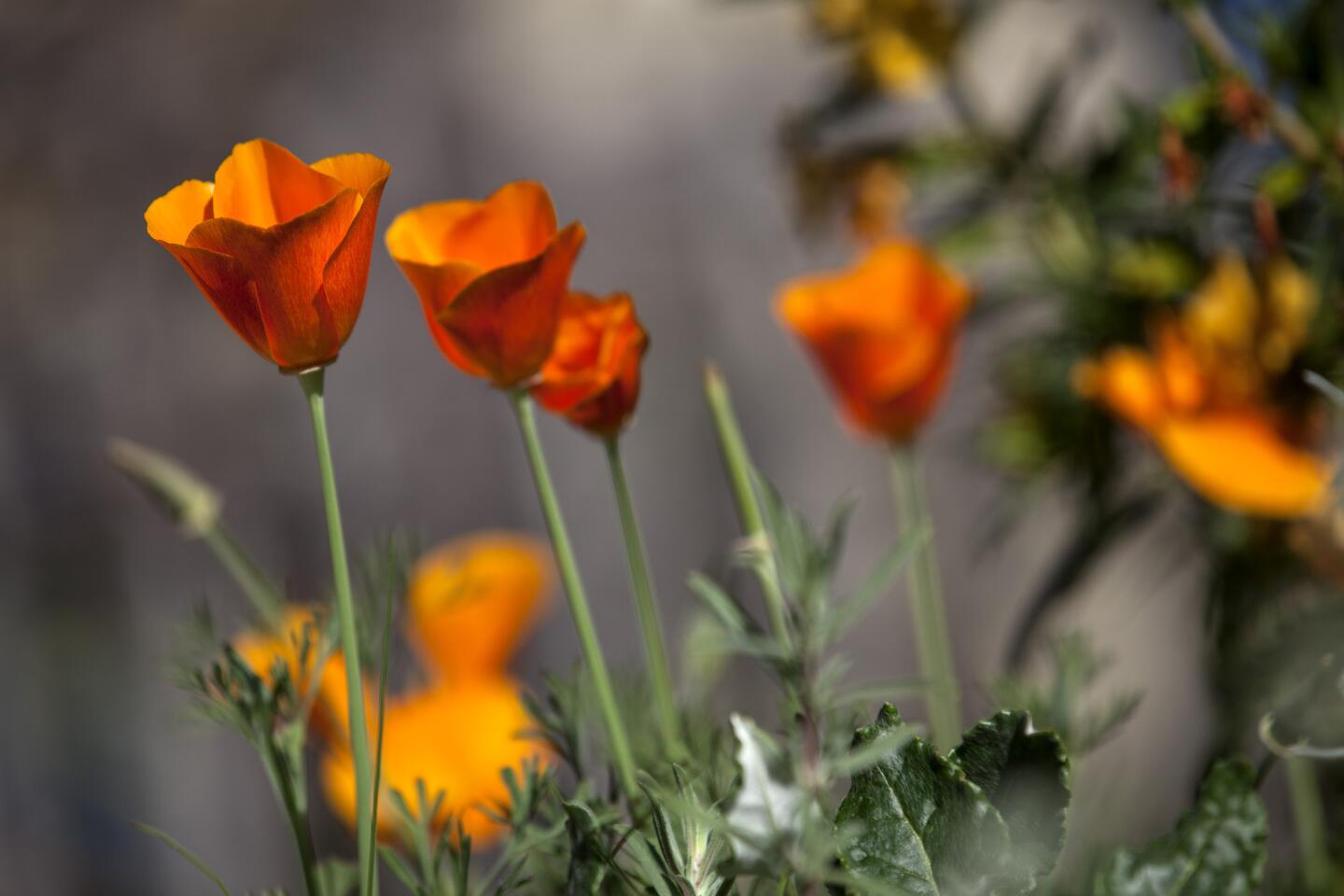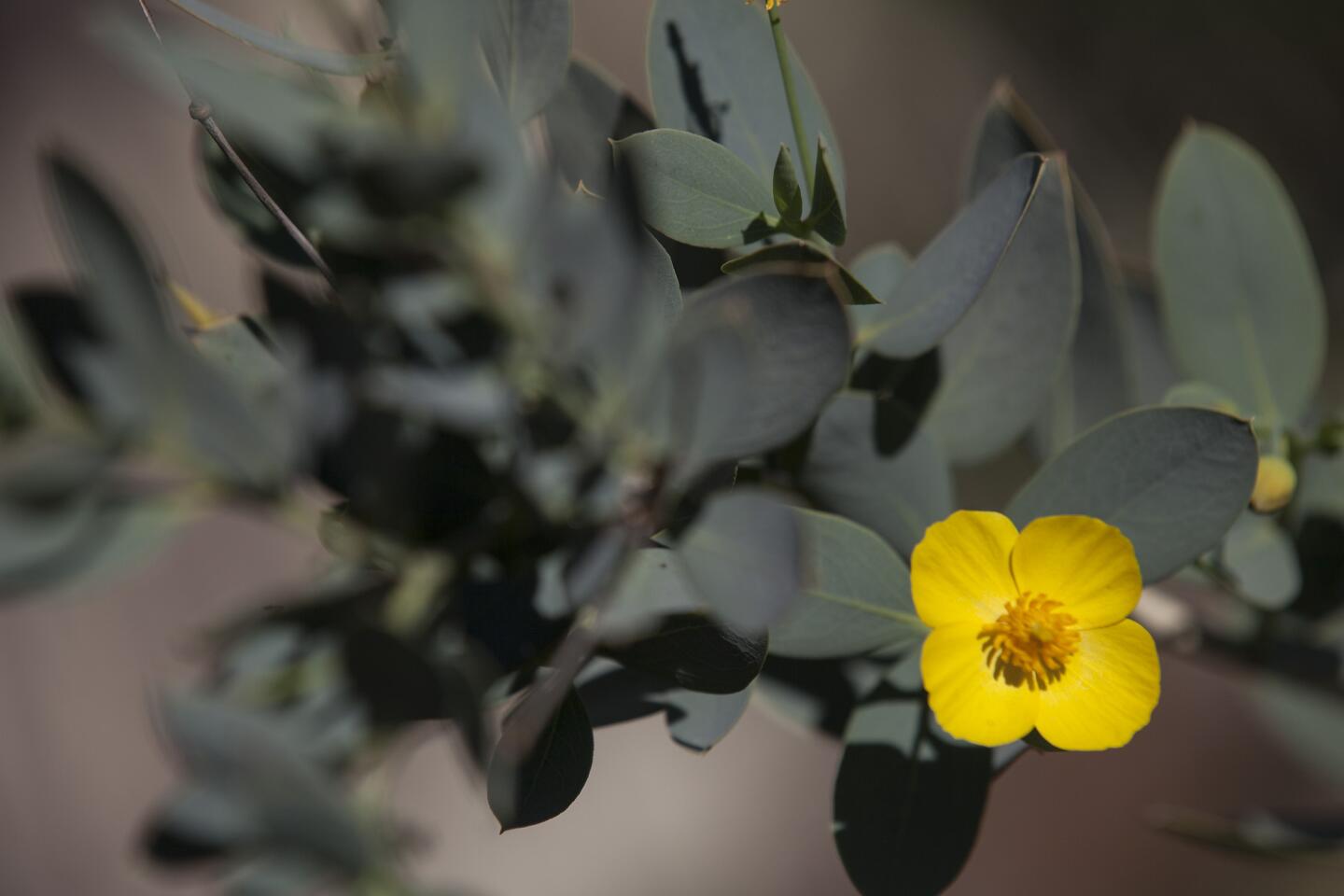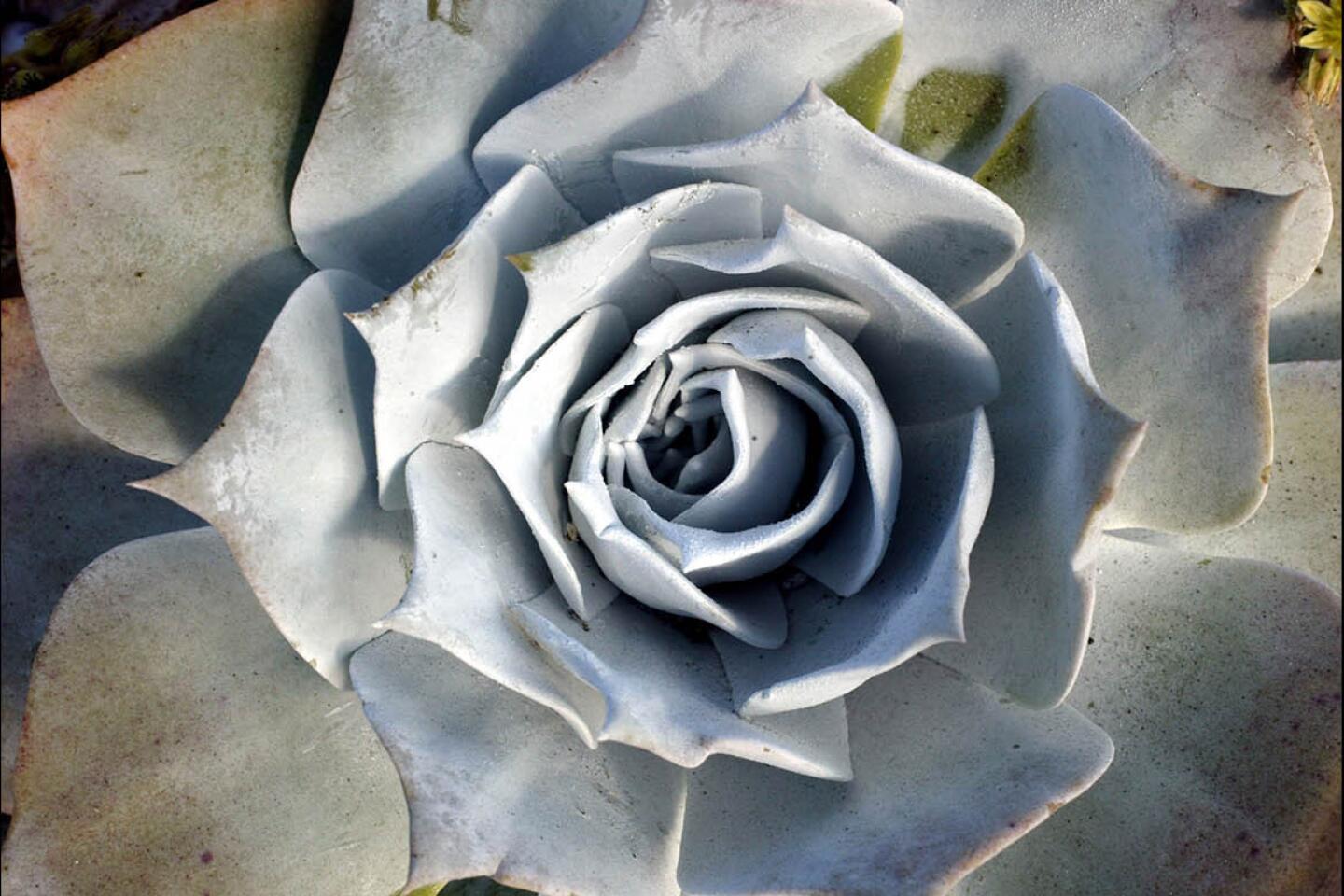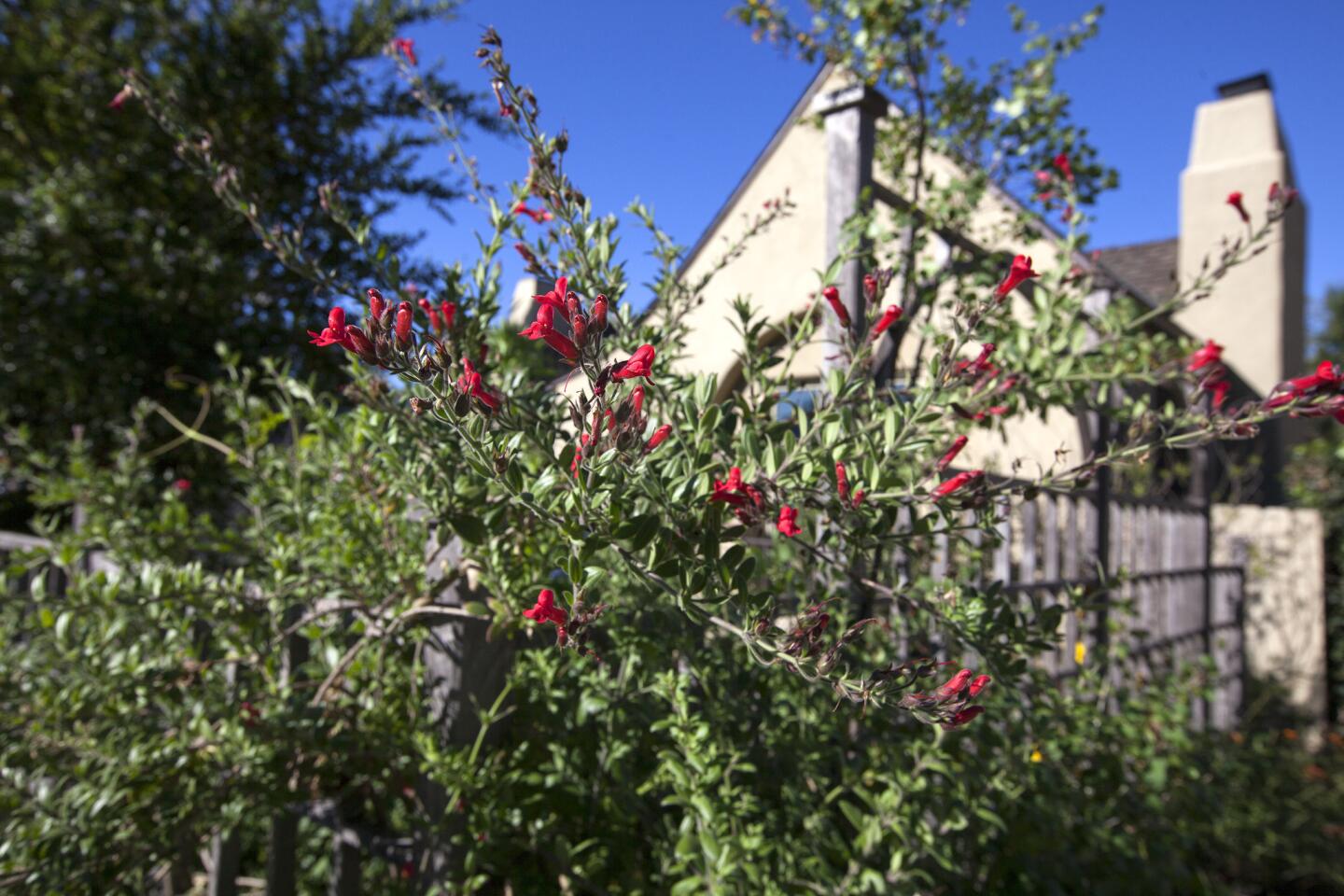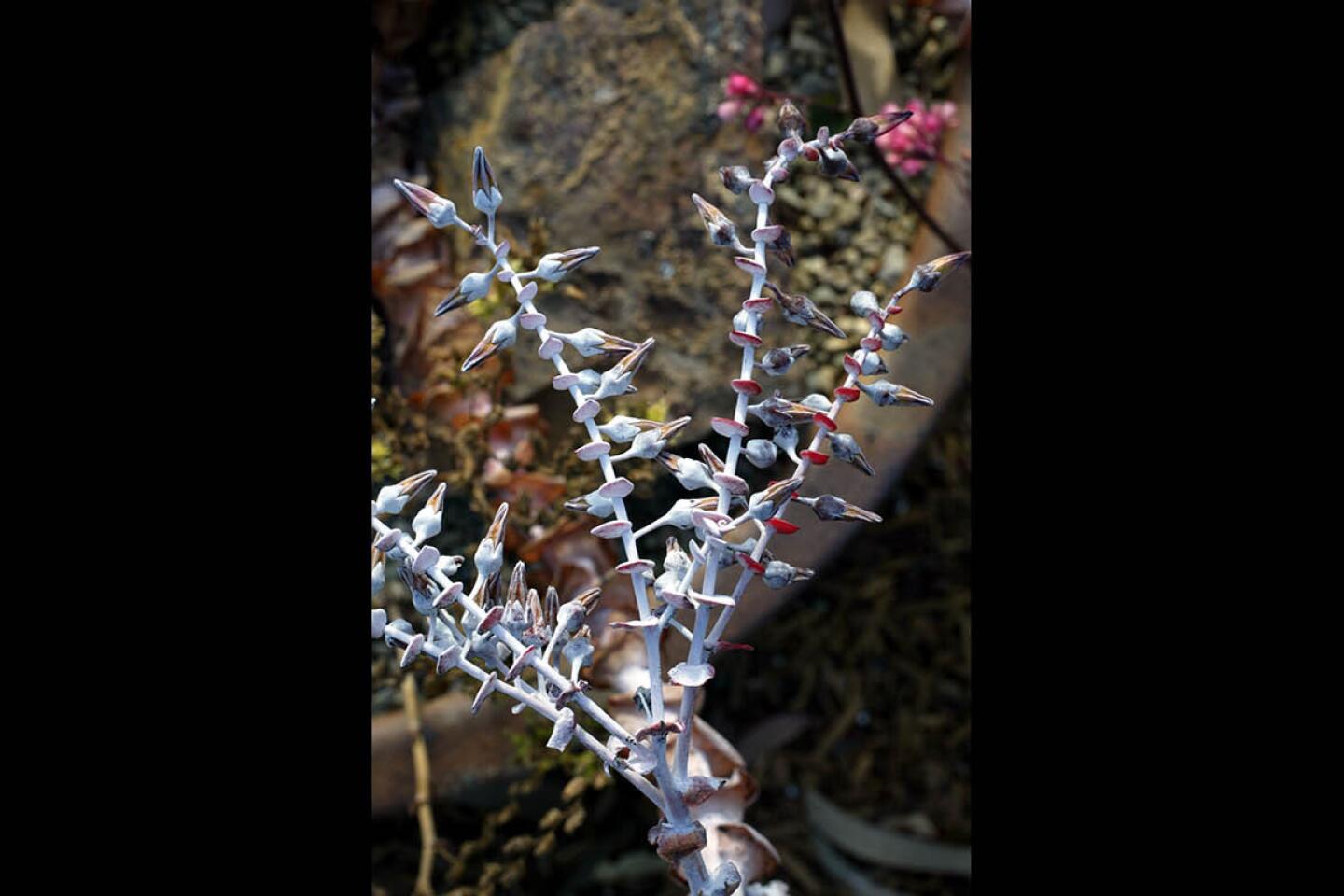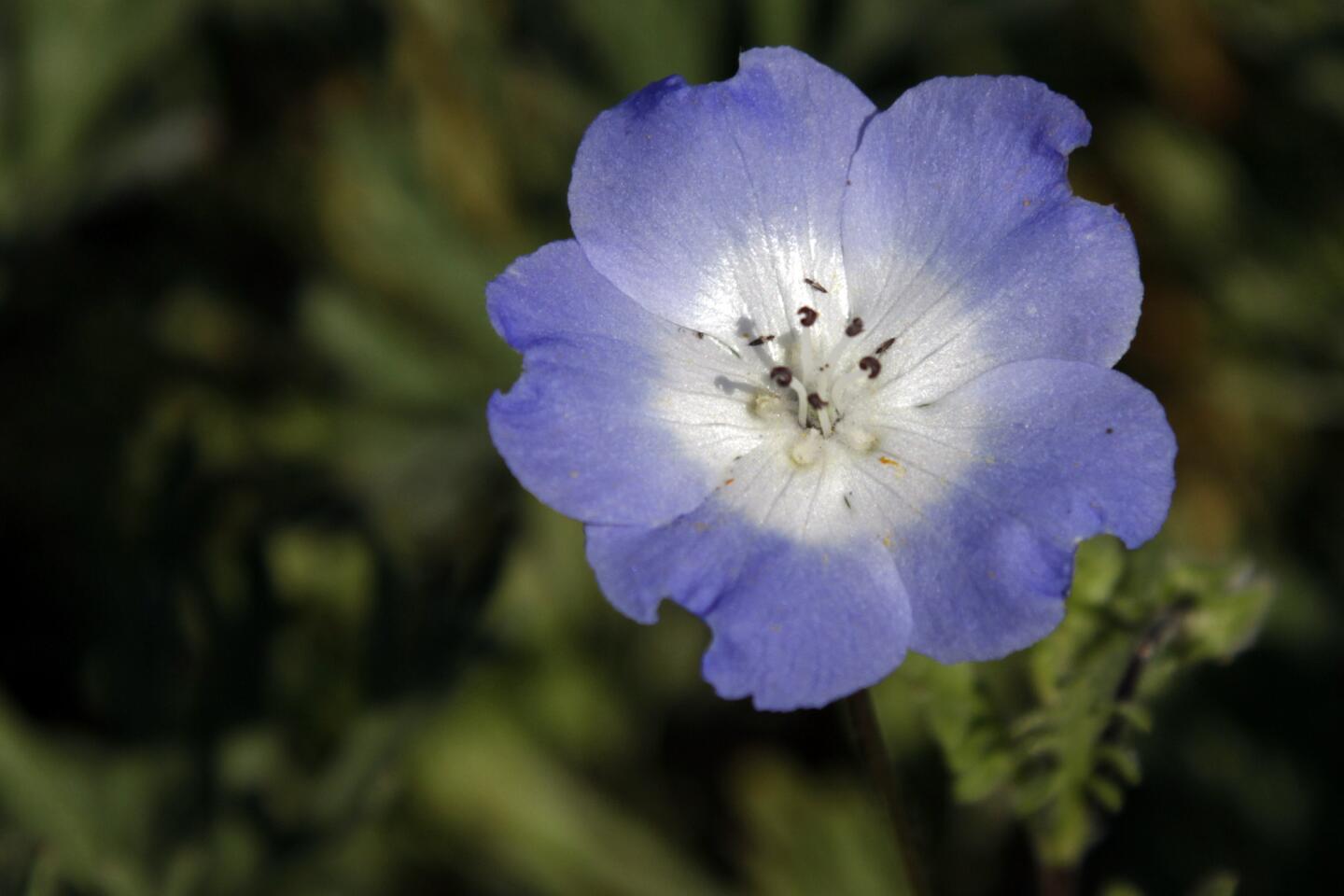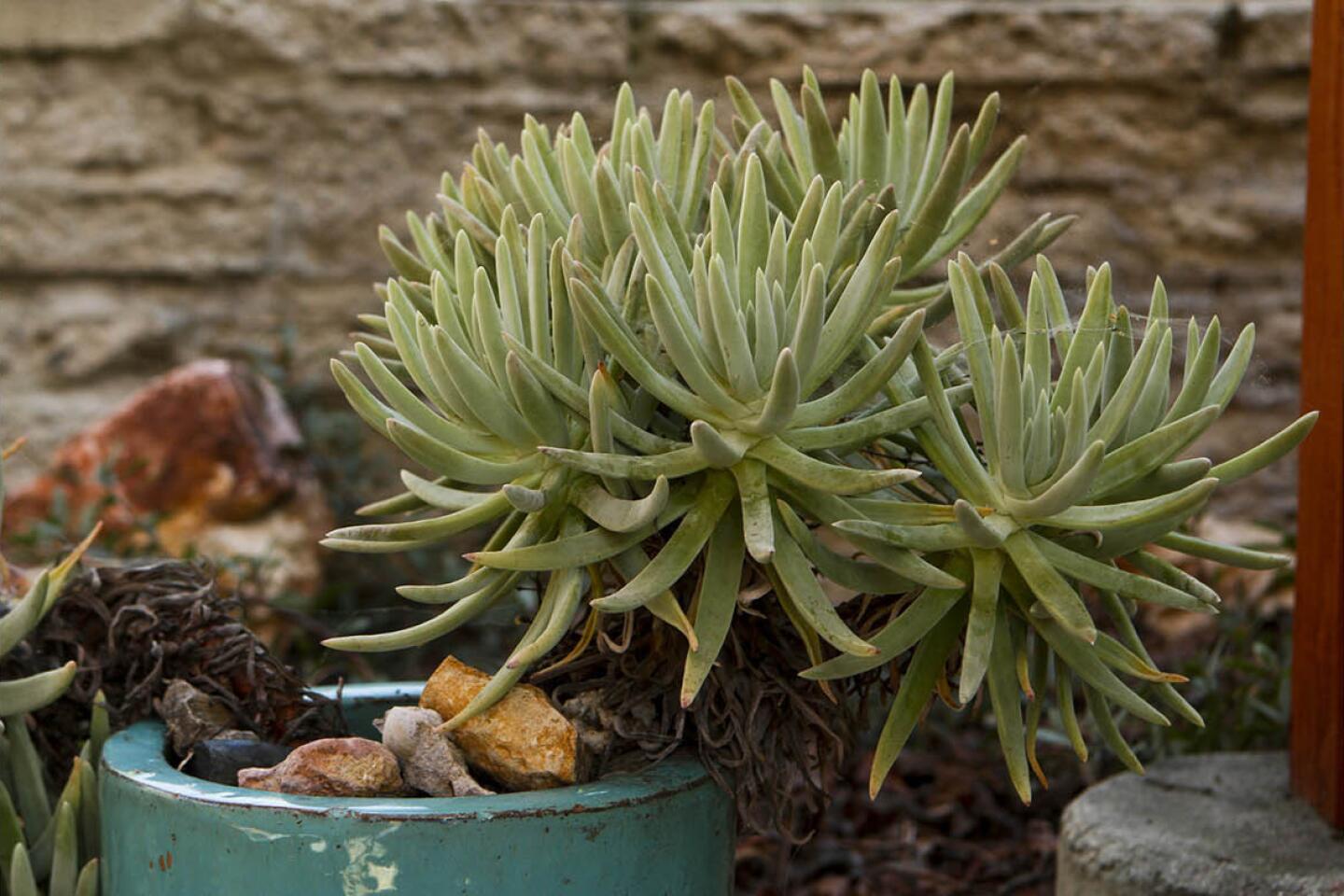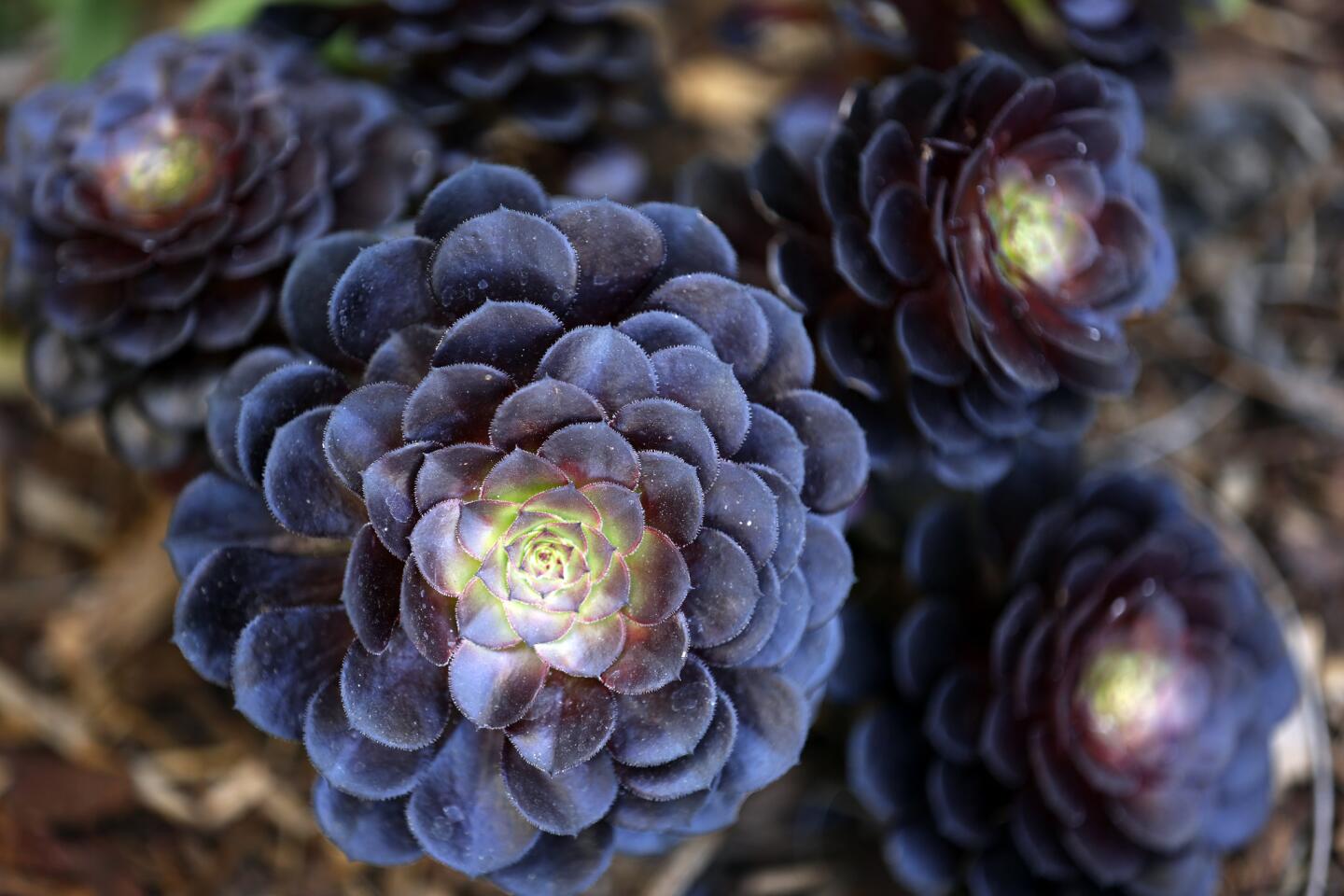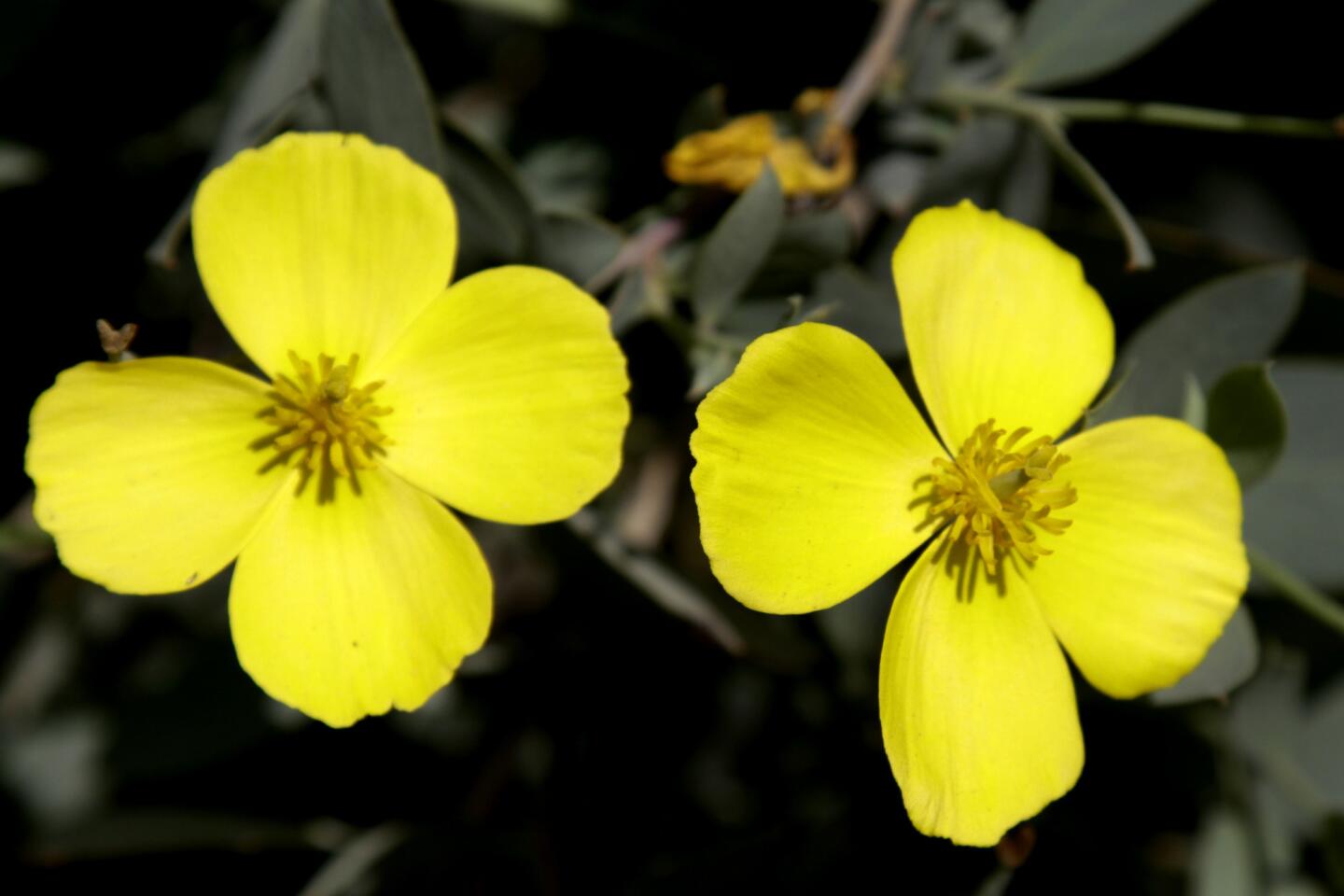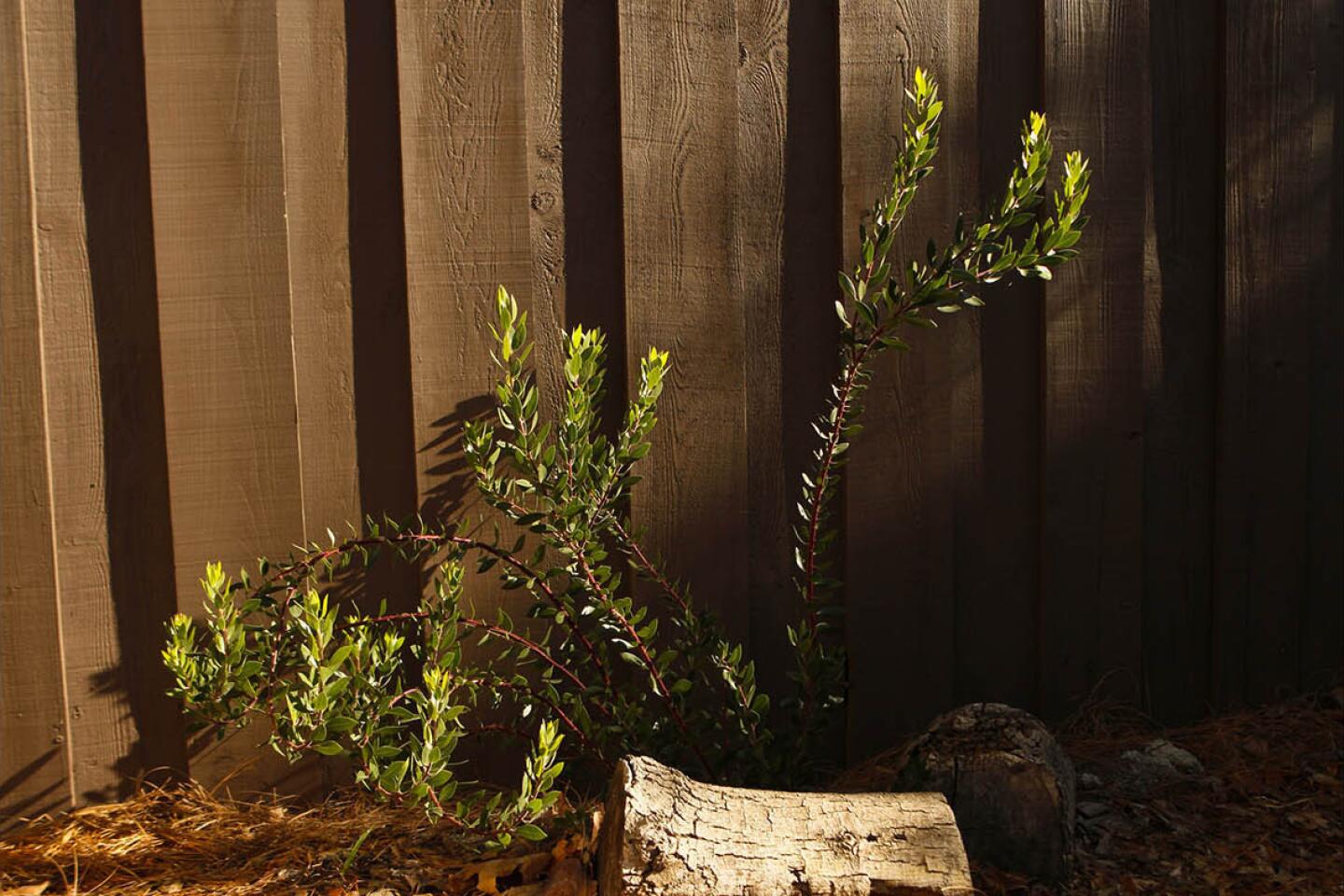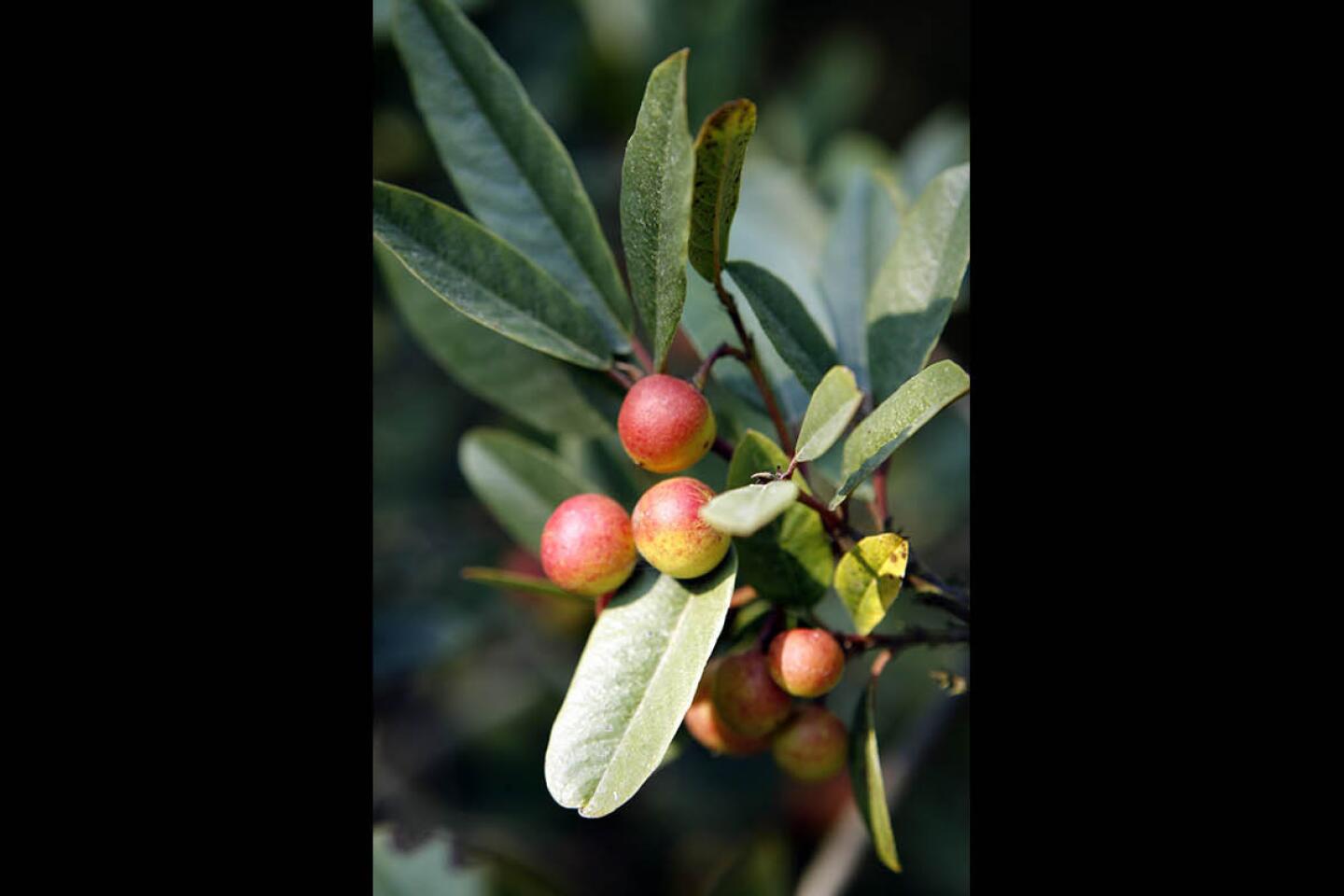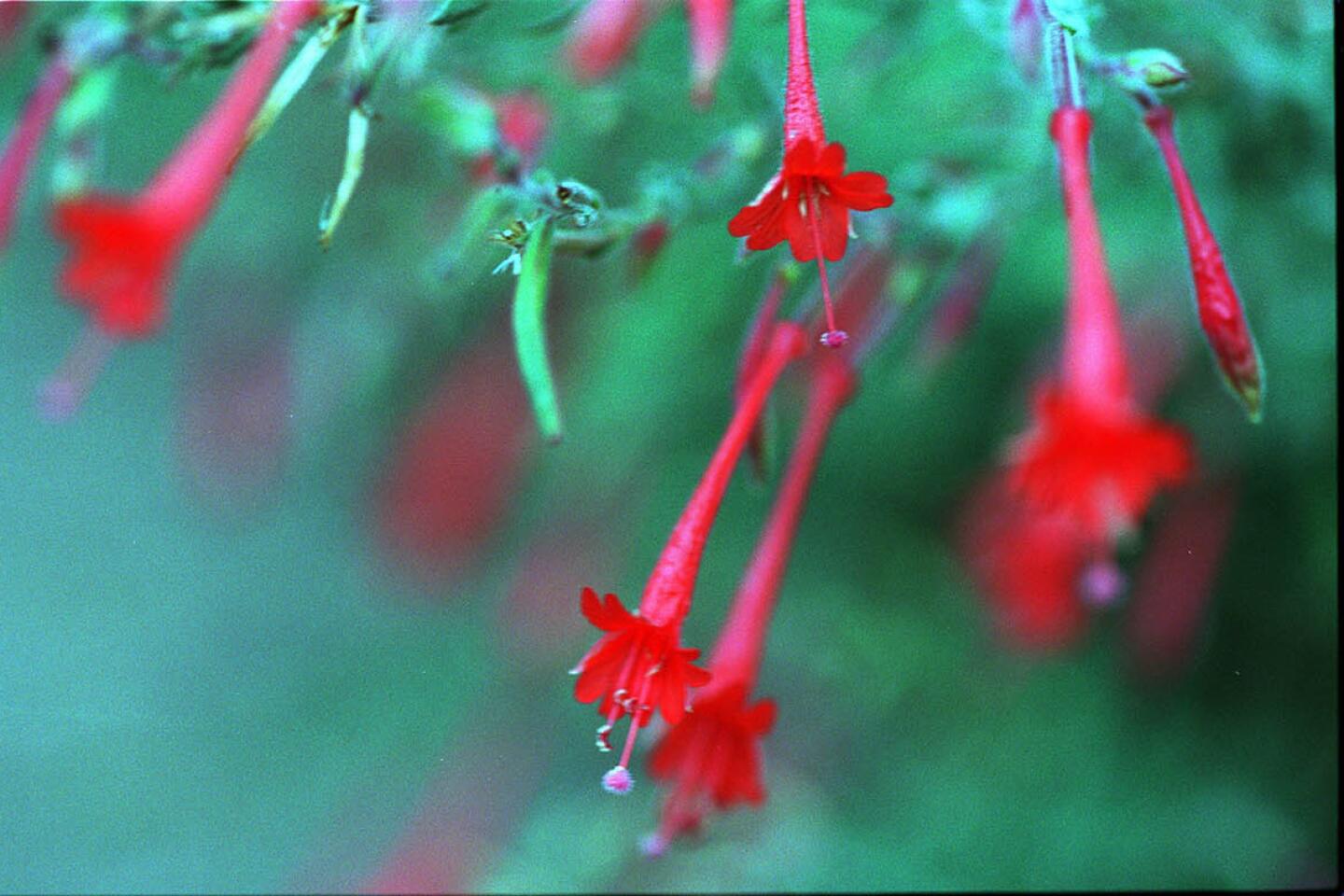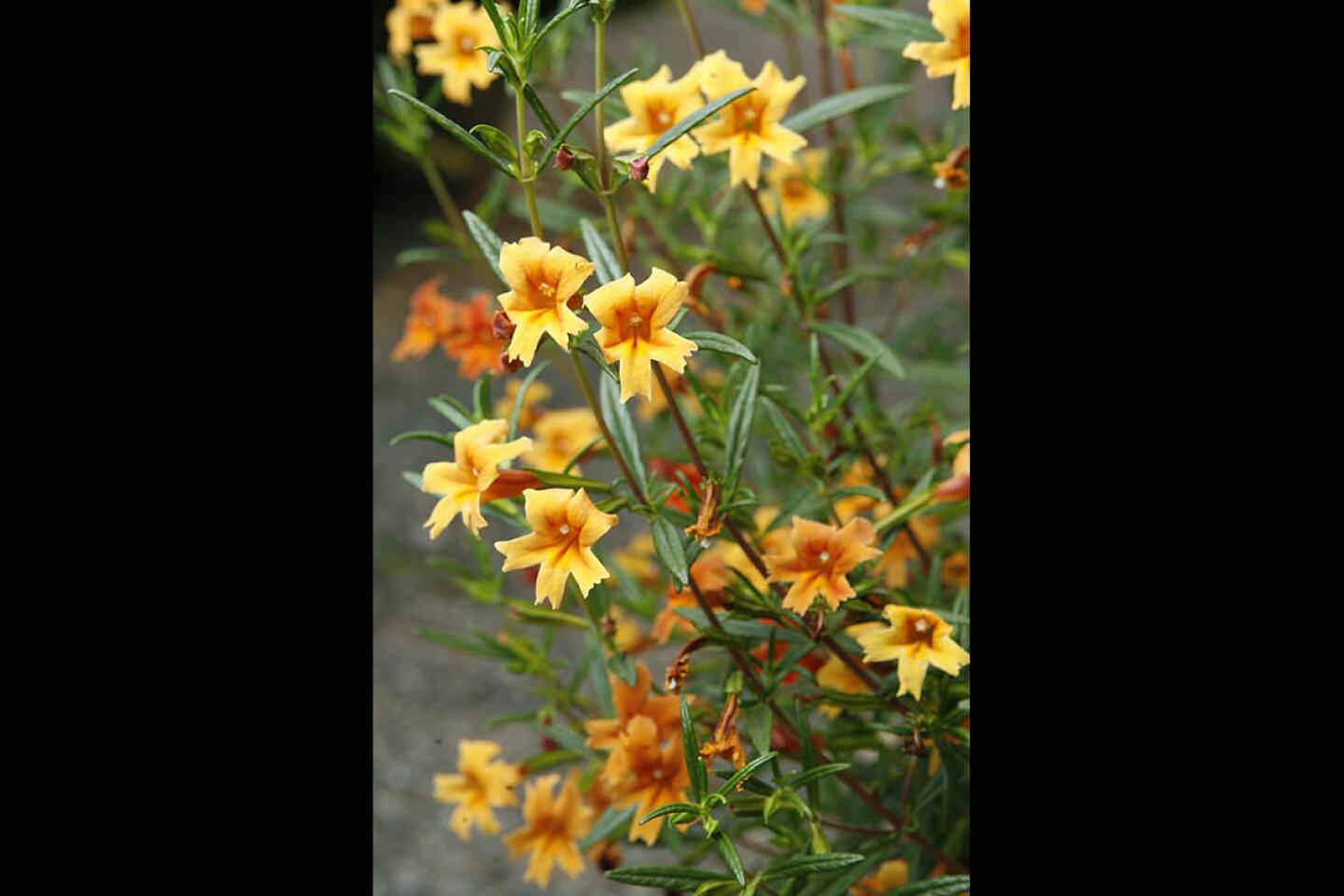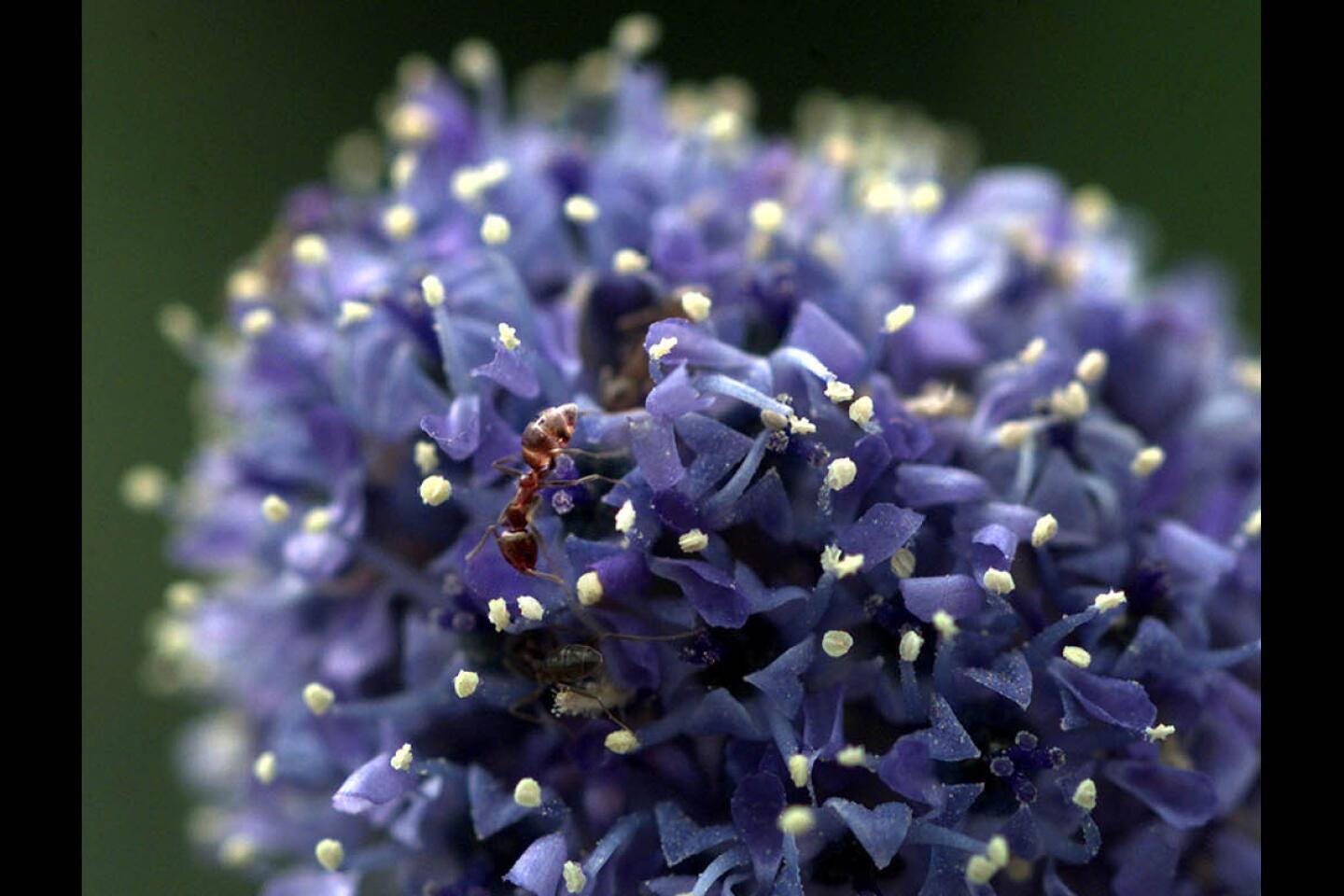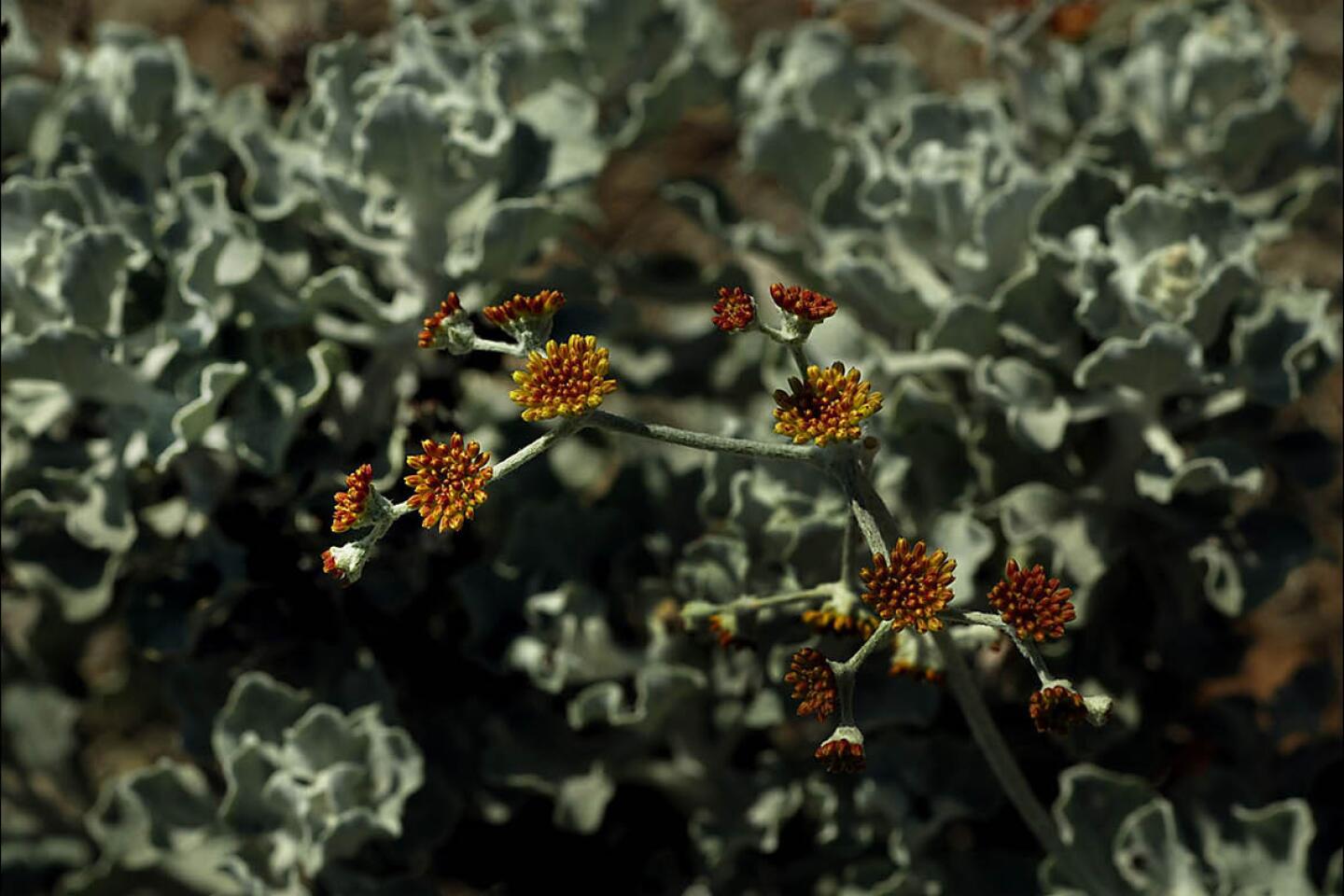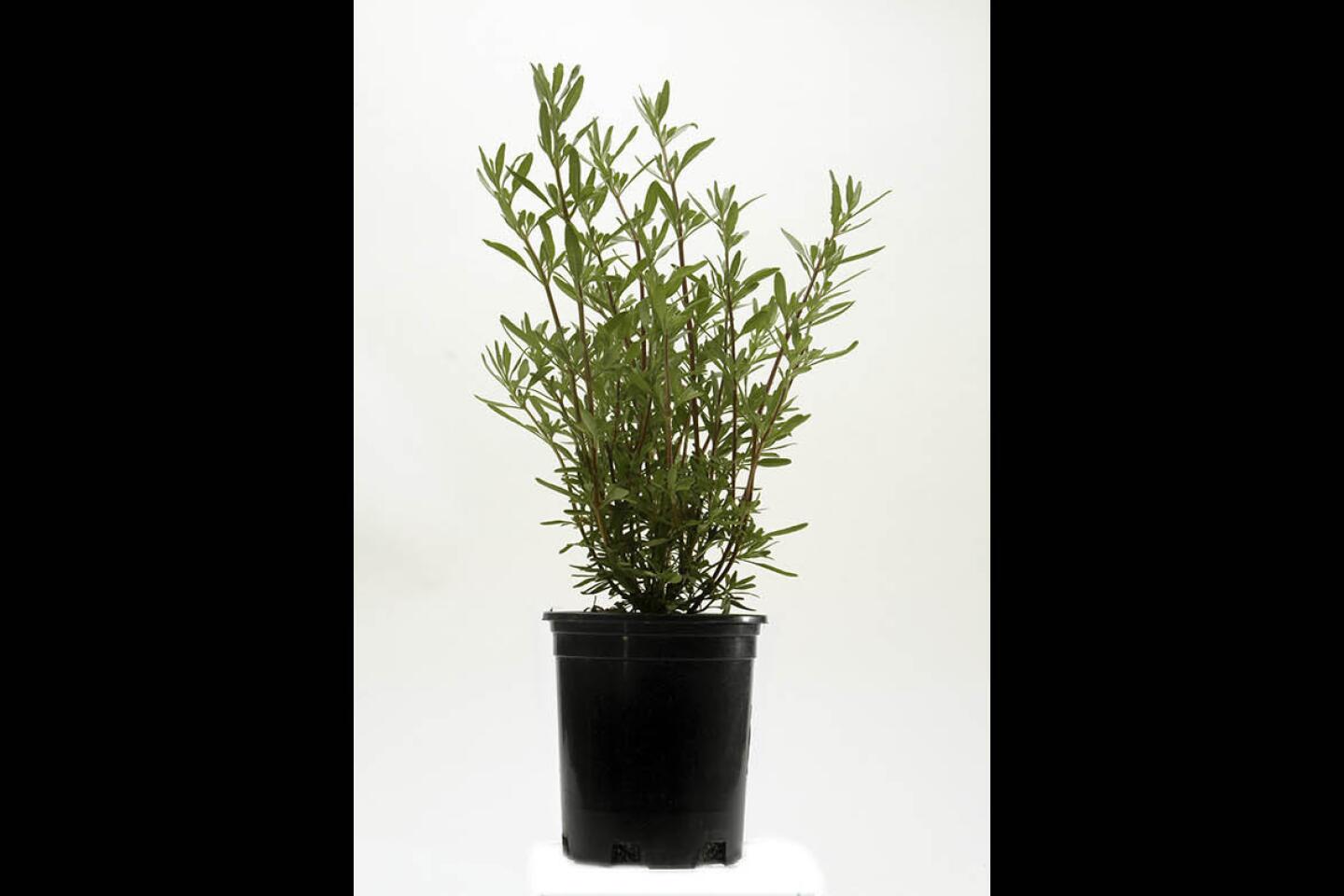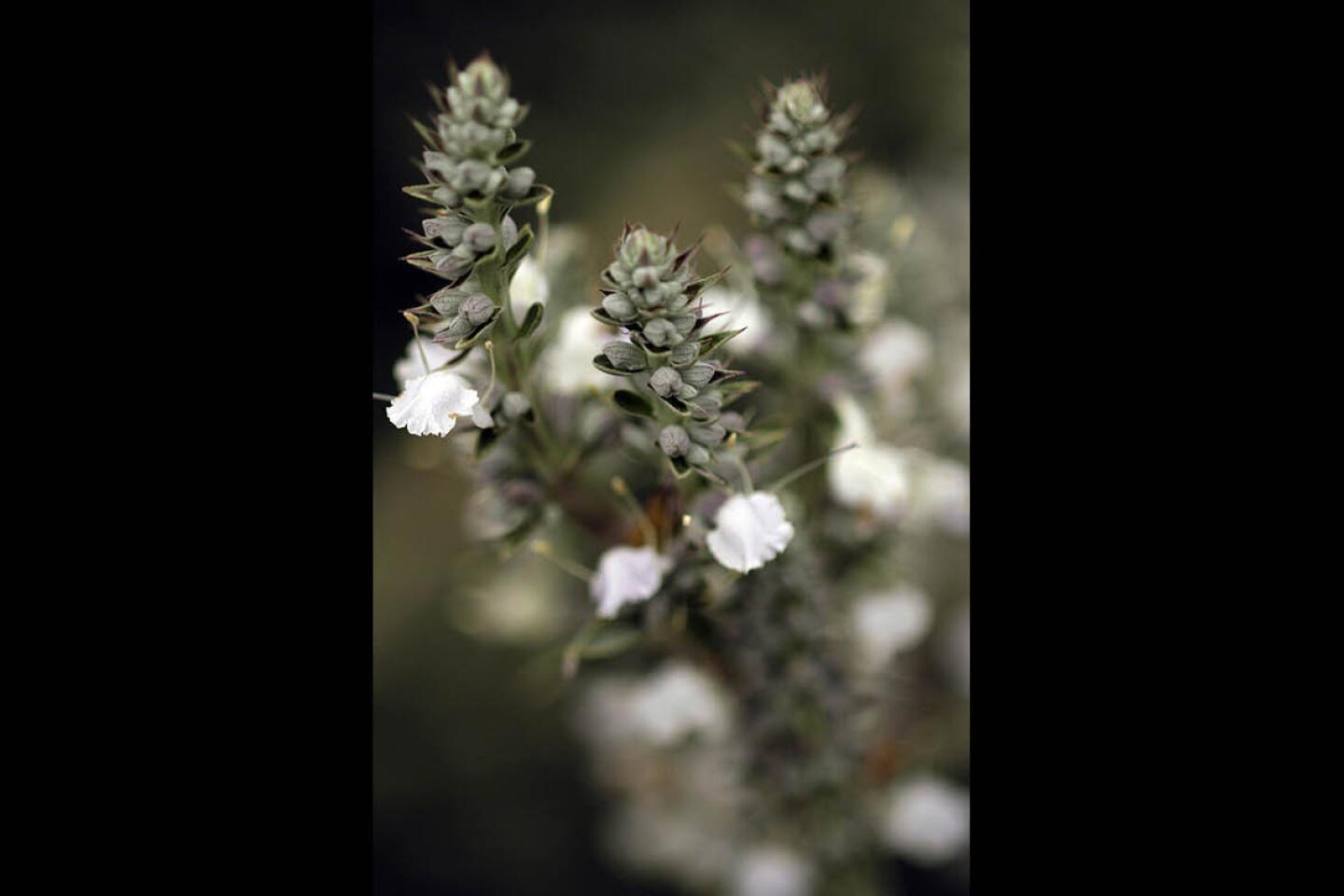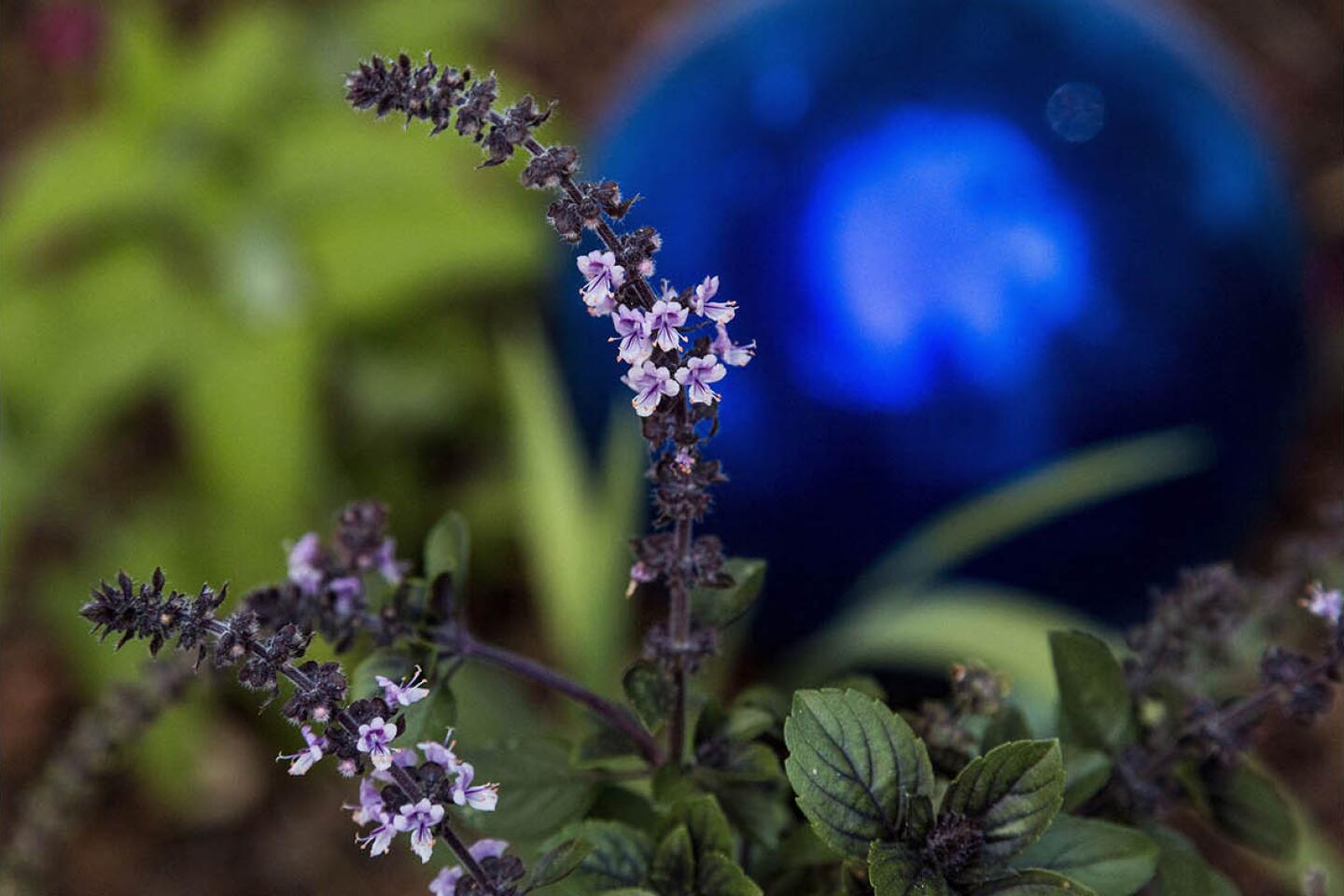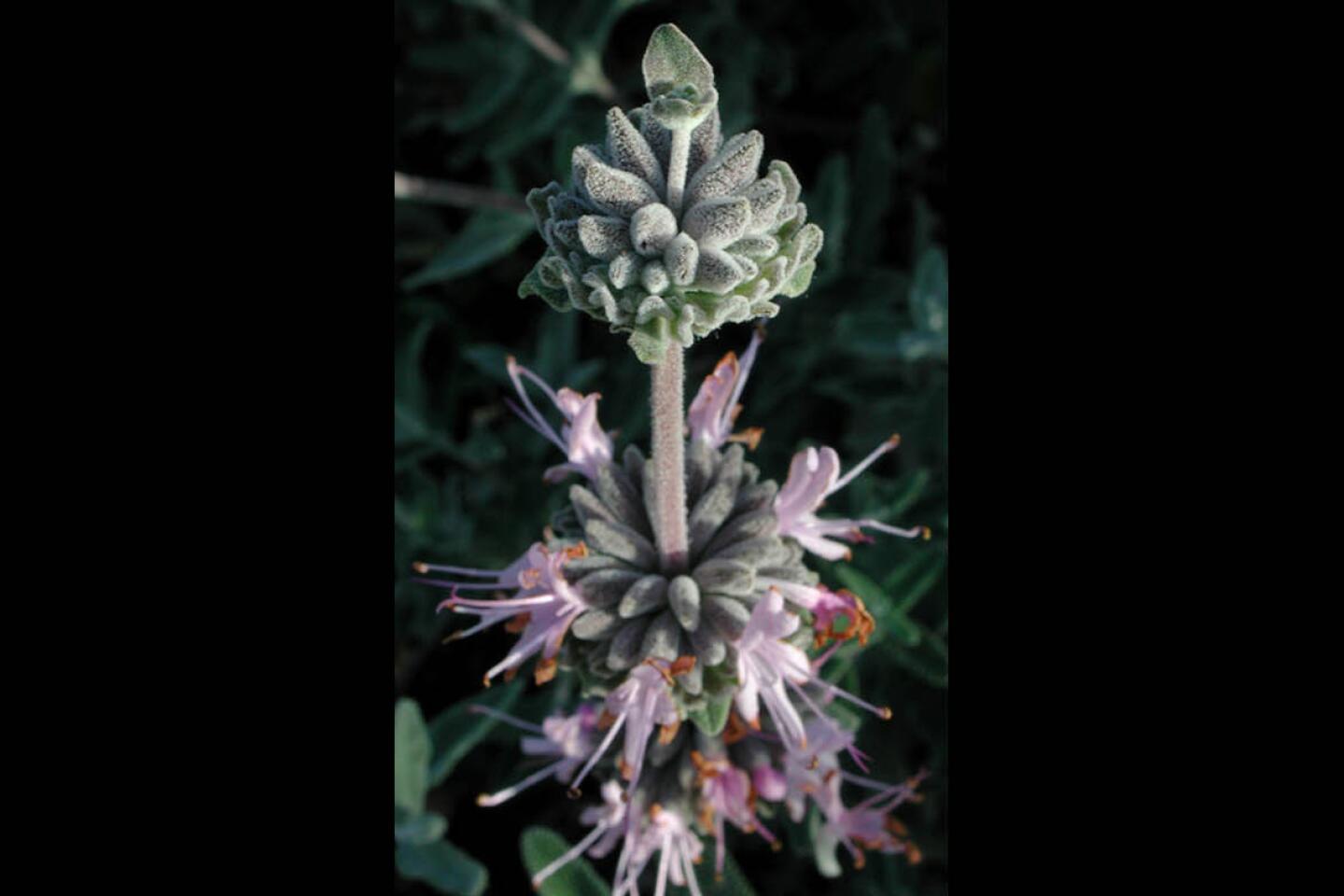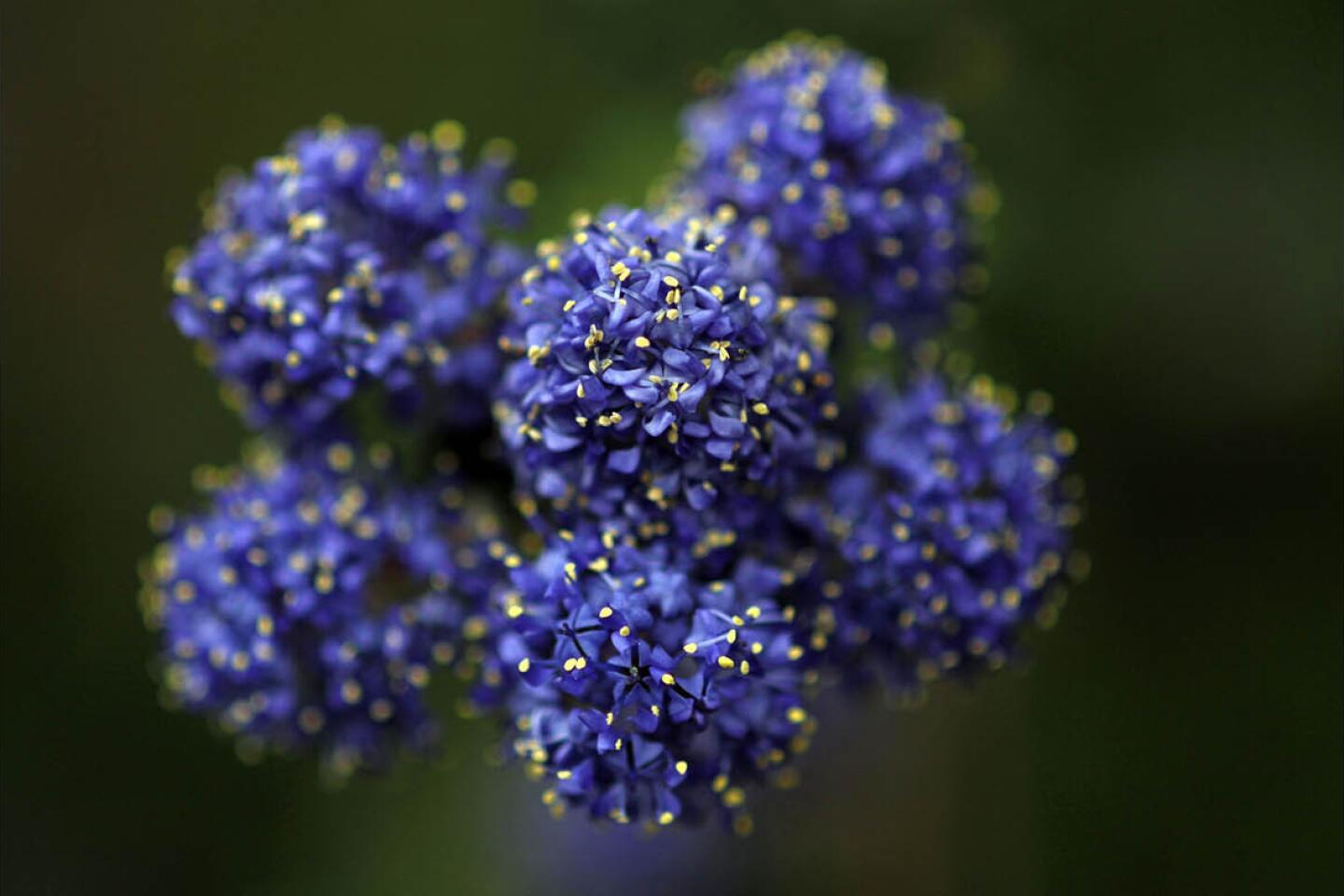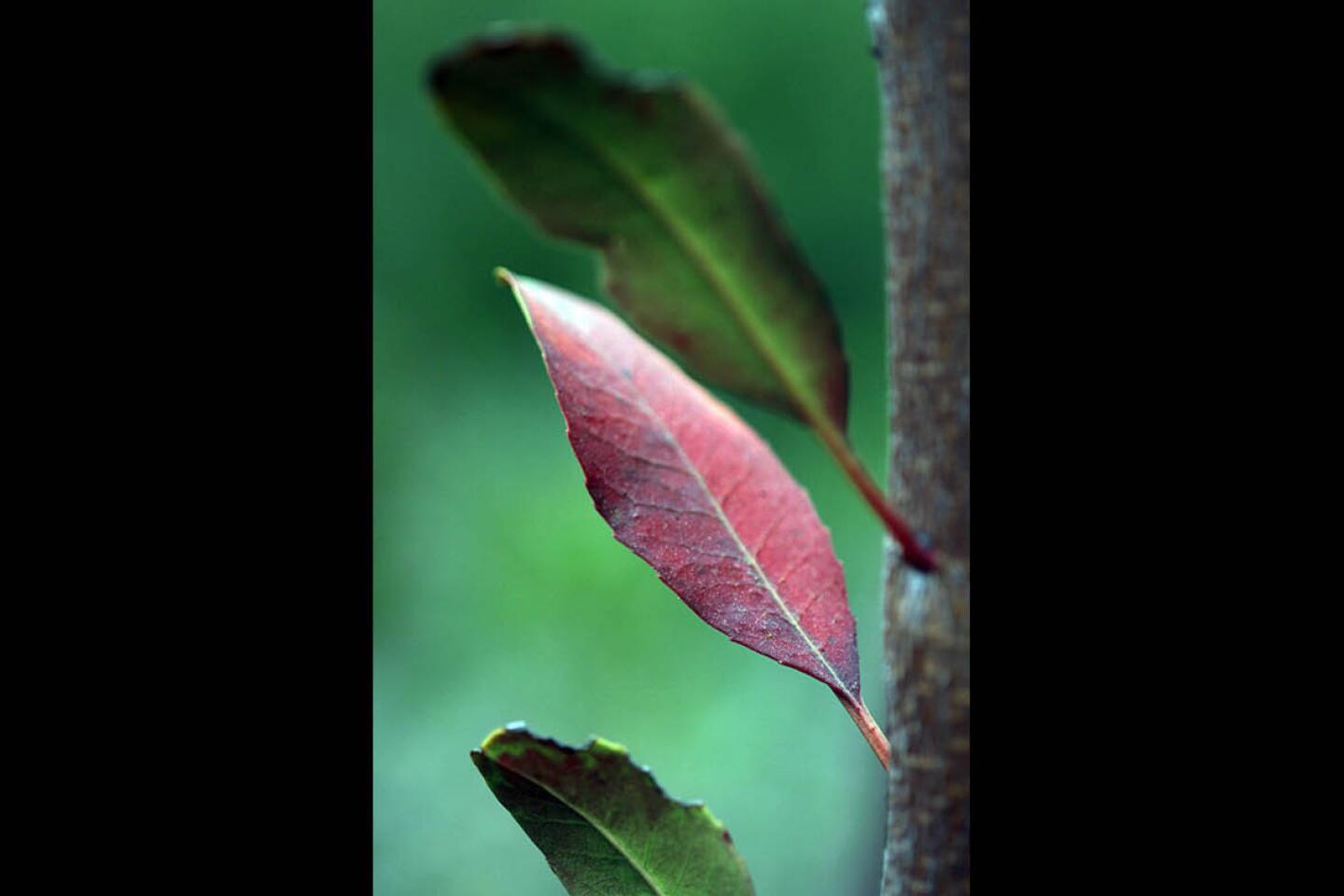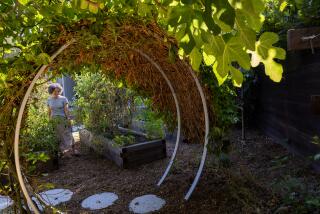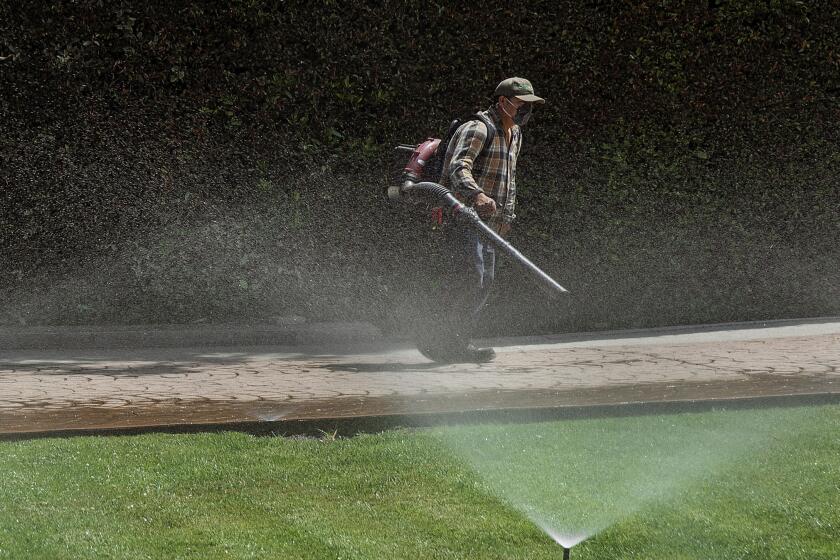They turned the front lawn into a welcoming extension of their Woodland Hills home
- Share via
Gov. Jerry Brown may have declared California’s drought over, but we’re continuing to ask Southern California readers to share photos of their lawn- to drought-garden makeovers. Why? “This drought emergency is over, but the next drought could be around the corner,” Brown said in a statement. “Conservation must remain a way of life.”
Here’s how one Woodland Hills couple transformed their thirsty front yard:
What happens when an architect and a landscape architect renovate a front yard together? In the case of architect Carmel McFayden and landscape architect Louisa Relia, the result is a grid-based landscape that thoughtfully complements the lines of McFayden’s 1969 Midcentury home.
McFayden and husband Frank Donner live in Woodland Hills, where temperatures can reach triple digits in the summer; this prompted them to consider a more drought-tolerant alternative to grass.
A turf removal rebate of $6,600 sealed the deal, and after investing an additional $4,000 of their own money (including labor and designer discounts), the couple transformed their front lawn into an outdoor space that connects them to their popular cul-de-sac.
“My husband liked to sit out on our front step with our Australian shepherd,” McFayden said. “He wanted a formal place to sit and talk to our neighbors.”
After Relia’s landscape design (shown below) was approved, the couple hired a Bobcat operator to remove the lawn, along with six inches of dirt. The original flagstone walkway and several long established plants and bushes were retained and everything else was removed. After three truckloads of dirt were exchanged for 18 cubic yards of nitro fertilizer, MLML Landscaping broke up the clay soil in preparation for planting.
Relia’s underlying design is composed of two-foot grids, which reflect the linear lines of the home.
“The grid created the guidelines for the design,” says McFayden. “The plants themselves create their own form and scent and color that surprises and delights as you walk toward the home.”
The couple installed an eight-foot-wide gravel path next to the house to allow access to trash cans, the side yard and the driveway. The gravel keeps water away from the home’s foundation and creates an outdoor space where Donner can sit and visit with neighbors.
The couple ditched rain gutter downspouts in favor of sleek copper rain chains and concealed companion catch basins in the gravel below.
The new landscape features 147 plants of 10 different varieties that are on the Los Angeles County drought tolerant plant list: bunches of low spreading rosemary, red kangaroo paw, 33 achillea “Moonshine,” five agave attenuata, 15 flowering echeveria elegans, 57 English lavender, santolina chamaecyparissus, sedum and two olive trees.
The grid design means that the homeowners can add plants at will. They recently filled in some bare areas with additional lavender, rosemary and acchillea “Moonshine” plants.
Since its completion a year ago, the garden has improved more than just curb appeal.
“It has brought a lot more life to the garden,” says McFayden, who enjoys watching birds, bees and hummingbirds from inside.
The front yard is now an extension of the couple’s home.
“We sit out in the front nearly every evening enjoying a glass of wine and talking to our neighbors, who are always out walking their dogs,” McFayden said. “I feel like we increased the square footage of our home. It’s like a living room. These are spaces that people don’t think of utilizing.”
If you’ve given your yard a makeover, we want to see it, and may feature it in an upcoming edition of the Saturday section. Please send before and after pictures to home@latimes.com, and include a day-time contact number.

Getting your pots ready for spring planting.
Twitter: @lisaboone19
For an easy way to follow the L.A. scene, bookmark L.A. at Home and join us on our Facebook page for home design, Twitter and Pinterest.
ALSO:
They replaced the lawn with a gorgeous drought-tolerant meadow that doesn’t need mowing
A lush English garden in Studio City is converted to a water savvy landscape
A thirsty Pasadena lawn morphs into a stunning, drought-tolerant habitat for hummingbirds
They ripped out their 3,500-square-foot lawn and created a magical ‘Rancho Relaxo’
Before and after: A Tustin garden goes from thirsty lawn to drought-tolerant oasis
